

AMRON Centre is a professional analytical and research organisation, specializing in issues concerned with changes in real estate transaction prices and impact of those changes on the perspectives of the Polish housing market.
Apart from professional reports prepared accordingly to the detailed specifics provided by investors, developers and other entities seeking for solid information on a particular market segment, location and time period, we also prepare analytical publications referring to the current situation on the Polish housing market and actual problems concerned with that market.
What makes our publications a unique source of knowledge, is the basis of our analyses – our database. Unlike publications of other housing market consulting companies, our reports reflect the actual picture of the market, based on transaction prices.
You are welcome to check the below publications. Before downloading, please leave us your e-mail address and we’ll let you know about the next articles.
Are you interested in an individually tailored report, please contact us via e-mail at raport@amron.pl.

The housing problem in Poland is a real pain point for young people, affecting many aspects of their lives – from decisions about starting a family to freedom in job searching or access to education. High prices, ownership culture and shortages in social housing create a complex picture of the situation where it's increasingly difficult to get one's own place. As a result, more and more people aged 25-34 live with their parents and this phenomenon is becoming a permanent element not only of the Polish social landscape – it's a trend visible throughout Europe and even worldwide. The terms "nesters", "bamboccioni" (from Italian: "adult babies"), and "kidults" (from English: "adult children") describe young adults, who live with their parents or move back after some time of independent living.
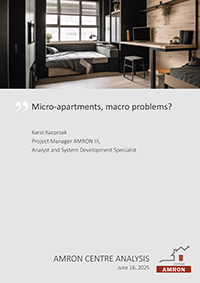
In recent years, micro-apartments, i.e. compact units with a floor area often not exceeding 25 sqm., have become an increasingly discussed topic in the real estate market. Although such housing solutions have existed for decades in many countries, especially in Asia, they remain a new and controversial phenomenon in Poland. Some perceive them as a potential solution to the housing crisis and a response to the needs of young people, while others see them as a troubling symptom of a deteriorating socio-economic situation and declining urban planning standards.
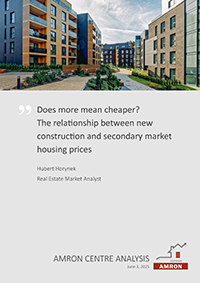
The Polish housing market is constantly changing – prices’ fluctuations, changes in the supply structure, differences between regions – all of this means that anyone interested in the subject of housing should be aware that this is a dynamic and highly complex phenomenon. Property prices are influenced by a number of factors: from the general condition of the economy and the level of inflation, through local investment decisions, to the demographic structure of a given city or the availability of public transport. One of the key elements of this puzzle is the relationship between the primary market (i.e. new apartments) and the secondary market (i.e. those that already have their owners and a history).

The new “First Keys” programme is the government’s response to the growing difficulties that Poles face when trying to purchase their own home. Stringent credit requirements and high property prices mean that many persons are unable to afford a place of their own. The aim of this initiative is to enable individuals, who previously had no opportunity to enter the housing market by improving access to financing, while maintaining market balance and mitigating the risk of price inflation driven by excessive demand. The “First Keys” programme could become an important tool in addressing the housing crisis in Poland. Since the draft legislation has not yet been officially presented, all related information should be treated as preliminary.

REITs, or Real Estate Investment Trusts, are special funds that invest on the real estate market and generate income from leasing or selling properties. REITs currently operate in 46 countries worldwide. The United States has the longest history with REITs, having introduced them through the REIT Act in 1960. The intention behind this solution was primarily to open up the commercial real estate market, previously dominated by large funds and wealthy investors, to smaller, individual investors. A key feature of the new solution was the imposition of several requirements on these entities, the most important of which included the obligation to distribute 90% of income as dividends and a focus on real estate investments. The first European country to introduce REITs was the Netherlands. In 1969, tax-privileged investment funds known as Fiscale Beleggingsinstelling were established, which were de facto tax-exempt and required to distribute 100% of their income to shareholders within 8 months of the fiscal year-end. From the 1990s onward, similar solutions were introduced in other countries: Belgium, followed by France (SIIC), Germany (G-REIT), the United Kingdom and Spain (SOCIMI). In Asia, successful implementation examples include Japan, South Korea and Singapore, where REITs play a significant role not only in the real estate sector, but also on financial markets. It is important to note that this model is not uniform: in each country, REITs are regulated individually and the principles of investment and taxation of income vary.

The suburban town of Ząbki may seem unassuming due to its small area – just 11 km². Over the years, Ząbki has undergone significant changes in character, evolving from a settlement to a garden city concept and, ultimately, into its current state as a high-density urban area. The city’s Development Strategy for 2024-2033 envisions its transformation into a compact city. The structural dynamics of Ząbki stem from its location, population influx and changing residents’ needs.
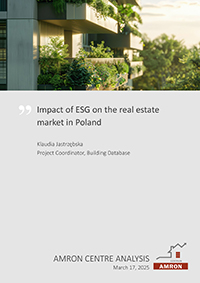
In recent years, the concept of ESG (Environmental, Social and Governance) has gained significance, influencing many industries, including the real estate market. The challenges faced by the real estate sector are highly diverse and complex. Construction in Europe has a huge impact on environment, accounting for nearly half of total energy consumption, about half of raw materials exploitation, one-third of water consumption and substantial waste generation. These figures highlight the extent of the construction sector’s impact on natural resources and ecosystems, underscoring the need for sustainable development. A responsible approach to resource management, along with the implementation of innovative technological solutions, can be essential for minimizing the industry’s negative environmental footprint.
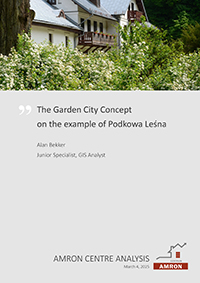
The garden city concept was developed by Ebenezer Howard in the late 19th century as a response to the issues faced by industrial urban centres, which were overcrowded and expanding in an unplanned and rapid manner. Residents of these cities lived in poor conditions, often in rented, cramped apartments suffering from humidity issues and a lack of access to sunlight. These conditions negatively impacted public health and contributed to social problems. At the same time, E. Howard observed depopulation in rural settlements. He aimed to create a solution that would improve the quality of life for London’s workers while simultaneously revitalizing the surrounding villages.
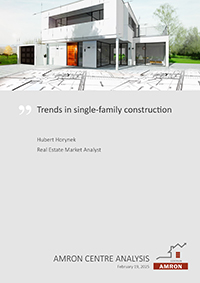
For many years, unfinished single-family houses have been part of the landscape in various regions of the country. Among these buildings, you can find both those that, despite visible deficiencies, e.g. an unfinished facade, are already in use and perform residential functions, as well as those whose construction has stopped at the stage before it was possible to move into them. We are talking about buildings erected by so-called individual investors, i.e. people who decide to build a house mainly to meet their own housing needs, and not for commercial purposes.
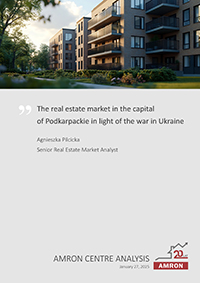
The invasion on Ukraine, launched by the Russian Federation on February 24, 2022, has had a profound impact on many aspects of social, political and economic life in Poland. The real estate market, particularly in Rzeszow and its surrounding areas, has undergone significant changes due to the influx of refugees and the increasing demand for various forms of accommodation.
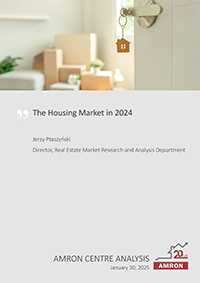
The year 2024 brought significant changes to Poland’s housing market. Demand for both mortgage loans and apartments fluctuated, influenced primarily by political factors. Two government subsidy programmes for housing loans played a major role – the ‘Safe Loan 2%’ programme, introduced before the 2023 parliamentary elections, and the ‘0% Loan for a Start’ programme, announced for the post-election period.

The issue of vacant properties has become a frequent topic of political and social discussions, especially considering rising real estate prices and housing overcrowding. Proper utilization of these properties could help alleviate housing shortages. This raises the question: does it make sense to renovate old, abandoned buildings?
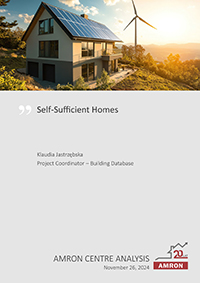
Autonomous homes, also known as self-sufficient homes, are innovative buildings that enable residents to become independent of external energy, water and heat providers. The primary aim of such a project is to create a building that, through appropriate technologies, can operate almost entirely independently of external infrastructure and utility networks. This solution is gaining popularity, particularly among individuals who value an eco-friendly lifestyle and aim to minimize their carbon footprint.

The real estate market is directly influenced by macroeconomic factors across the entire country, as well as by specific regional dynamics. Agricultural areas have defined operational frameworks that determine their productive potential. Factors such as land location, soil classification, slope and sunlight are some of the attributes affecting a region's production capacity. The WRPP (Agricultural Production Space Valorisation) Index reflects the productive capacity of agricultural lands based on natural conditions. This index is estimated from soil quality and agricultural suitability (including soil classification), agro-climate, terrain topography and soil water relations. Based on the WRPP Index, the most favourable agricultural development conditions in Poland are localized primarily in southeastern, southern, and southwestern Poland – namely the Lesser Poland and Lublin Uplands and the Silesian Lowland – areas characterized by lower levels of industrialization and urbanization. This includes the southern part of the country, excluding mountainous regions, and a small northern area (the Vistula Delta). The northwestern regions are marked by a high forestation rate, making them less suitable for agricultural use, while northeastern areas are characterized by numerous lakes.

The systemic transformation and the resulting economic changes of the 1990s brought far-reaching consequences for many areas of social and economic life. Unlike most large cities, which coped fairly well with the new challenges, many small and medium-sized towns found themselves in a very difficult situation. Rising unemployment due to the collapse of unprofitable businesses, a lack of new investments, and, most significantly, a population outflow, particularly among young people, are the main negative consequences of these changes, which are still perceptible today across the entire regions. After joining the European Union, Poland became one of the largest beneficiaries of structural funds aimed at reducing regional disparities, and a significant number of small towns successfully seized EU funds not only to improve infrastructure and attract investments, but also to enhance the quality of life for residents. However, despite significant progress, the most serious issue for the vast majority of small and medium-sized towns remains depopulation, with all its negative consequences – social and economic challenges, and problems with the functioning of local institutions such as schools, hospitals or cultural centres. Young people, seeking better educational and career prospects, are migrating en masse to the largest cities, such as Warsaw, Cracow, Wroclaw or Gdansk, or they choose emigration and starting a new life abroad.
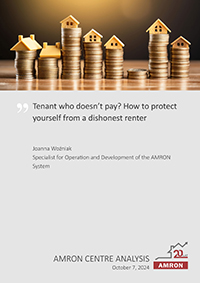
Buying a real estate is considered one of the most beneficial and safest long-term investments. It not only effectively protects capital from losing value, as shown by the recent period of high inflation, but it can also generate regular income without the need for constant involvement in the work process. Unfortunately, renting doesn’t always go smoothly. One of the main challenges that property owners face is finding a reliable tenant. Rent arrears, damaged furnishings, or neighbours’ complaints about noisy all-night parties are just a few difficulties that landlords encounter. It’s therefore worth taking steps to minimize the risk of financial losses and avoid additional stress. So, how do you properly assess the reliability of a potential tenant?

In recent years, more and more foreigners, especially from EU countries and Ukraine, have decided to buy flats in Poland, both for investment and residential purposes. Stable economic growth and low interest rates have sustained the growing demand for local housing until 2019. Flat prices were rising rapidly, especially in large cities such as Warsaw, Cracow, Wroclaw and Gdansk. The outbreak of the COVID-19 pandemic in 2020 temporarily froze the housing market. Many transactions were put on hold and developers delayed new projects. Despite the initial slowdown, housing prices did not fall. Demand recovered quickly, driven by low interest rates and growing trend of investing in real estate as a safe investment in uncertain times. The gradual increase in interest rates reduced the creditworthiness of Poles, which resulted in a decline in the number of loans granted in 2022. Developers continued to keep prices high, mainly due to rising construction costs. In 2023, the “Safe Loan 2%” support programme was launched, which boosted demand in the segment of flats purchased by young people, as well as the number of granted loans. According to the data presented in the AMRON-SARFiN Report, 162 375 loans were granted in 2023, which was higher by 28.55% compared to 2022 and 36.69% lower compared to the record year 2021 in terms of the number of new loans. The value of newly granted mortgage loans in the indicated period amounted to PLN 62.763 billion, which was 43.81% more compared to the previous year and 26.82% less compared to 2021.
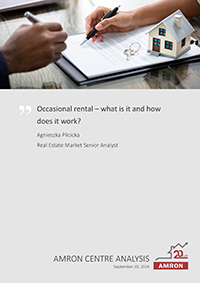
The percentage of people renting dwellings in Poland remains relatively low (it amounted to only a few percent), although the rental market (both private and institutional) is steadily developing. According to Eurostat data as for 2023, 4.2% of Poles lived in apartments rented on market terms. It's not much, but comparison of Poland's recent result with statistics for the year 2009 showed almost a twofold increase. The development of rental market, concentrated mainly in the largest agglomerations, was the result of increasing occupational mobility of Poles, who don’t intend to establish lasting ties in particular location. Constantly rising property prices, high mortgage interest rates and high downpayment requirements cause that many people, especially the young, cannot afford to buy their own flat. On the other hand, the offer of flats for rent is currently substantial, as low interest rates and high inflation together with negative interest rates in real terms have encouraged in recent years to look for alternative to bank deposits forms of capital investment and to invest in apartments for rent.
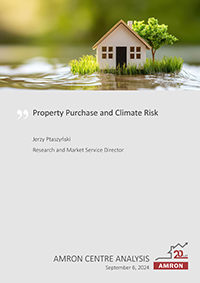
Climate change is one of the most significant challenges the modern world faces. We are increasingly experiencing extreme weather events, such as heavy rainfall, floods, droughts, heatwaves, hurricanes and wildfires. The summer of 2023 brought extreme heatwaves across Europe, particularly in the southern regions of the continent. Spain and Italy recorded temperatures exceeding 45°C, with a record-breaking 48.8°C in Sicily, the highest ever recorded in European history. Poland is also experiencing extreme weather events: on August 19 and 20 of this year, measuring devices in the Bielany district of Warsaw recorded daily rainfall levels of 119 mm, equivalent to nearly 120 litres of water per square meter. These drastic changes affect not only ecosystems and nature, but also daily life, including its economic aspects. Understanding how climate change may impact property values, as well as safety and quality of life, is becoming crucial for informed decision-making in the housing market. The risk of property value depreciation or significant increases in maintenance costs are just some of the challenges today’s buyers face.
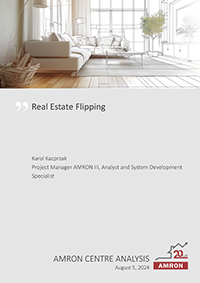
Real estate flipping has become an extremely popular investment strategy worldwide in recent years. This phenomenon, initially developed in the United States, is gaining increasing popularity in Poland as well. This type of investment strategy attracts both experienced investors and newcomers to the real estate market. Why has it gained such popularity, and what factors influence the development of this market? What are the key steps in the flipping process, and what risks should one be prepared for?
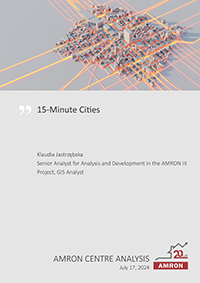
The concept of "15-minute cities" was proposed by Sorbonne urban planner Carlos Moreno. He encourages the creation of cities where residents have access to all essential services, jobs, schools, parks and entertainment within 15 minutes on foot or by bike. The proposed approach aims to improve the quality of life for residents, reduce traffic and decrease CO2 emissions by reducing dependence on cars. Increasingly, cities around the world are experimenting with this concept, making changes in urban planning and infrastructure to better meet the needs of citizens. In a model city of the 15-minute city idea, the centre features a market square, which is the heart of the city, where pedestrian walkways dominate and car traffic is limited. Historical buildings are renovated and repurposed for cafes, restaurants and meeting places, while new buildings are designed according to sustainable development principles. According to this vision, every residential neighbourhood is designed with social diversity in mind and is self-sufficient (including a supermarket, pharmacy, school, health care centre and playground for kids). Another characteristic of such a city is a well-developed network of bike paths and sidewalks, and public transportation is eco-friendly and modern. Public spaces are designed with residents' physical activity and recreation in mind.

Population aging is a demographic phenomenon characterized by an increasing proportion of elderly people in the population. It is caused by both longer life expectancy and low fertility rates. On one hand, the favourable phenomenon is that people live longer thanks to advances in medicine, better access to healthcare and improved living conditions. This means that the number of elderly people in the population is growing, indicating an improvement in quality of life and health in society. On the other hand, low fertility rates, which means an insufficient number of births, exacerbate the aging process. Social changes in recent years, such as delaying the decision to have children to later years, fewer children per family, as well as economic factors such as the rising costs of raising children and economic uncertainty, contribute to the decline in birth rates. Fewer children mean that younger generations are smaller, which in the long term leads to a decrease in the number of working-age people. This can cause several social and economic problems, such as labour market shortages, burden on pension and healthcare systems and changes in social structure.

High housing prices and declining rental investment profitability in Poland, along with the desire to secure capital or a potential place of emigration in politically uncertain times, are prompting more and more Poles to look for real estate abroad. Among the countries most often chosen by Polish buyers are Southern European countries - Italy, Portugal and Spain. According to Registradores de España data, last year Poles purchased 3 118 properties in Spain, slightly more than in 2022, when there were 2 973 transactions concluded. In the first quarter of this year, there were already about 800, indicating at least a maintained pace of purchases from the previous two years. Moreover, Poles have also been among the nationalities allocating increasingly larger sums to investments, with a year-on-year increase (2023/2022) of nearly 18%.

Property tax is one of the key sources of funds for local governments. It covers land, buildings and their parts, as well as structures related to running a business. In recent years, attention has been increasingly drawn to the problem of differentiating tax rates based on the type and purpose of the property. Many taxpayers wondered why their property tax rate for a garage was several times higher than their neighbour’s rate. This caused numerous controversies and protests from garage owners.

In 2024, a series of new regulations in the field of construction law will come into force, encompassing changes resulting from provisions announced by March 14, 2024. Amendments arise from changes to the regulation on technical conditions to be met by buildings and their location, and the regulation on the detailed scope and form of the construction project. Furthermore, in February of this year, the Ministry of Economic Development and Technology announced work on further updates to legal regulations affecting construction law. The aim of these changes is to improve the quality and safety of buildings. New regulations are aligned with modern ecological standards and current social needs.

For several months now, there has been public discussion about the government programme called “Loan for a Start”. I intentionally avoided using the adjective “new” because it’s merely a more mathematically complex version of the previous program, “Safe Loan 2%”. Similar to all the previous programmes aimed at financially supporting selected borrowers – starting with the “Family on Its Own” programme from 2007-2013, followed by the “Flat for Youth” programme from 2014-2018, and ending with the “Safe Loan 2%” – the “Loan for a Start” programme also provides state subsidies for purchasing a first housing. Successive governments imitate their predecessors, attempting to create the illusion of solving the housing problem in our country by straightforwardly distributing money to those supposedly most in need. However, I am certain that those who are truly in need are not waiting for zero-interest loans. For instance, with an average loan value of PLN 418 000 in the “Safe Loan 2%” programme, the monthly loan instalment for a 25-year repayment period amounts to nearly PLN 1 400. Instead, they likely need rental housing, where the rent payment doesn’t exceed half of that amount. The “Flat Plus” program, which supports the construction of rental apartments, could have been a response to these needs. Unfortunately, it was tainted by the populist possibility of purchasing rental apartments after 20 years of tenancy. Moreover, the assumption that the government would be the executor of this programme led to its failure.

Recent years have highlighted how much society relies on electricity. An additional aspect driving even greater demand for electricity is the electro-dependence of basic household appliances - from heating systems to kitchen appliances or smart systems controlling various components in buildings. All of this makes the lack of power supply impossible for normal functioning. In search of an alternative and following the rapidly growing and popularizing trend of renewable energy sources (RES), interest can be noticed not only in solar energy but also in the possibilities of obtaining thermal energy.

In an age of rapidly changing climate conditions, the most sensible approach is naturalistic design. Modern construction focuses on ecology, functionality, minimalism, climate change adaptation, and responsible building practices. One of modern urban and architectural solutions is blue-green infrastructure (BGI). Greenery in private, residential and public spaces may not only serve an aesthetic purpose, but also may fulfil an ecosystem function. While ornamental value is often a priority in private gardens, it's crucial to consider the usefulness of greenery even in such projects. However, contemporary form of urban areas is mostly shaped by public spaces and property development investments, both in terms of volume and architectural design, as well as nature aspects. It is highly important to implement good practices, especially in these spaces, as they have the greatest impact on a large scale.
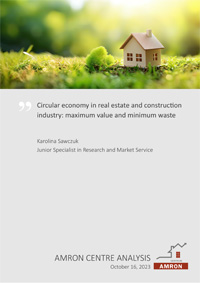
The world's population growth, depletion of natural resources and air pollution require societies to rethink and change current consumption habits. Climate change is speeding toward catastrophe and the existence of linear economy, which is based on low-cost production, assuming unlimited access to large quantities of materials and unlimited waste production capacity, will not be possible any longer. The construction industry not only is responsible for significant quantities of global greenhouse gas emissions, but also produces the large amount of waste – from the beginning of building construction to later everyday maintenance. Moreover, only a tiny percentage of construction waste can be recycled back into circulation.
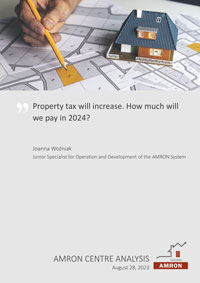
PROPERTY TAX WILL INCREASE. HOW MUCH WILL WE PAY?
August 28, 2023
Once again, the topic of property tax is returning. Poles are slowly getting used to double-digit increases. This year we had to pay almost 12% more than last year, and there is no sign of improvement in the next one. On 14 July 2023 the President of the Statistics Poland has issued a statement on the consumer price index for the first six months of this year vs. the corresponding period of the last year, which showeda jump of 15% upwards. We can also expect an increase in the levy by this much, as the Minister of Finance is guided by the level of inflation when setting tax thresholds.
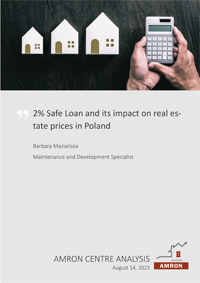
2% SAFE LOAN AND ITS IMPACT ON REAL ESTATE PRICES IN POLAND
August 14, 2023
At the end of May 2023, Polish parliament completed work on the Act on state aid in saving for housing purposes. The act is in force since July 1, 2023 and introduces a new programme called First Apartment. One of the basics of this programme is a new form of credit – 2% Safe Loan, which is available in a few banks since July 3, 2023. According to BGK (pol. Bank Gospodarstwa Krajowego – the managing entity) these are currently: PKO Bank Polski S.A., Bank Pekao S.A., Alior Bank S.A., VeloBank S.A., SGB Bank S.A., Bank BPS S.A. and cooperative banks of the BPS Association, Bank Spółdzielczy Rzemiosła in Cracow and Bank Spółdzielczy in Brodnica.

THE ENERGY PERFORMANCE OF BUILDINGS DIRECTIVE – ABOUT THE UPCOMING WAVE OF BUILDING RENOVATION IN POLAND
July 31, 2023
So far, the increasingly stringent requirements for the energy efficiency of buildings have only applied to newly built properties, but the newest EU law will also affect existing buildings. The main objectives of the revision of the Energy Performance of Buildings Directive (EPBD), known as ‘Buildings Directive’ are to substantially reduce greenhouse gas emissions and energy consumption in the EU building sector by renovation of all existing buildings (both residential and public). The draft amendment to EPBD is currently in trilogue negotiations (between the EU Parliament, the EU Council and the European Commission), the publication of the final shape of this directive is expected in the first half of 2024, and its entry into force will take place in 2026.

DECARBONISATION OF CONSTRUCTION INDUSTRY
July 18, 2023
Beginning of the 21. century is a time when the actual scale of the impact of industrial civilization and consumerism on the environment and its potential influence on the planet slowly began to reach the awareness of the societies. The threat of a climate catastrophe caused by greenhouse gas emissions, the imbalance of ecosystems, overproduction of waste and the perspective of depleting fossil fuel resources have prompted not only scientists, but also politicians and professionals from various fields to search for some new solutions.

The process of population ageing, which means an increase in the number of older people within a population, is one of the biggest issues in the 21. century. For that reason, the problem of ensuring adequate retirement pensions due to the growth in the number of pensioners will become noticeable in the future. The financial situation of Polish pensioners has been steadily worsening. One of such solutions available for homeowners might be reverse mortgage that is extremely popular in the US and UK.
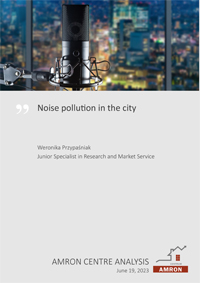
Noise is one of the biggest nuisances of living in a big city. According to the World Health Organization, noise pollution is the second largest civilization cause of ill health after smog. When buying or renting a property, it is worth examining acoustic conditions in the property and its surroundings. It is also good to read the planning documents to find out if there are any troublesome investments planned near the place we are interested in that will have a bad impact on our well-being and health in the future.
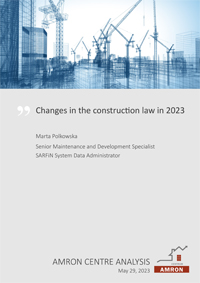
Amendment to the Construction Law Act consists of a number of changes announced successively in 2022. The announcement of the Marshal of the Sejm, dated March 10, 2023, on the publication of the unified text of the Act lists 7 acts, the amendments of which will affect this sector of the economy. The new regulations provides for numerous changes, among which the most important are the extension of the catalogue of construction objects that do not require a building permit, as well as modifications to the rules for commissioning construction objects and the regulation of the functioning of IT systems supporting the construction process electronically.

According to the data of Central Statistical Office, in 2022 tourist accommodation facilities were used by 34.2 million tourists, who were provided with 90.0 million overnight stays. Compared to 2021, it was more by respectively 54.3% and 43.2%. However, these data do not include persons using non-registered accommodations, including private houses and flats rented to tourists for a short time. At the same time, according to data from the National Census 2021, housing stock in Poland amounted to over 15.4 million dwellings. So, how many properties in Poland are used for short-term rental?

Saving energy is an issue that is being discussed more and more often in our homes. It results not only from the growing awareness of the impact of human activity on the natural environment degradation, but also from desire to achieve an energy freedom. The autonomous home responds to our needs and overcomes this problem. It is 100% self-sufficient. Is it realistic to build a house that does not need energy from outside? What opportunities do we have in Poland, and what are the barriers?
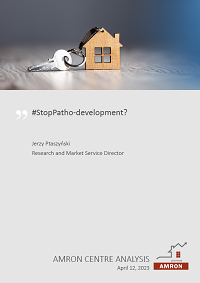
Although the subject of “patho-development” (not necessarily under this name) has been presented in the public debate for a very long time, in recent weeks it appeared again due to the conflict surrounding the Bliska Tower, JW Construction investment, also known as the "Warsaw's Hong Kong". At the same time, the problem of housing quality was noticed also by the Ministry of Development and Technology – at the press conference held on March 31, 2023 the Ministry’s representatives presented a number of solutions aiming at counteracting this phenomenon.

Until now, restrictive regulations have de facto prevented building of new onshore wind farms in Poland. In 2016, the so-called ‘wind turbine act’ (Wind Farm Investments Act) was adopted, which introduced the ‘10H rule’, meaning that new wind turbines had to be separated from the nearest residential buildings by the distance of at least 10 times the turbine height.
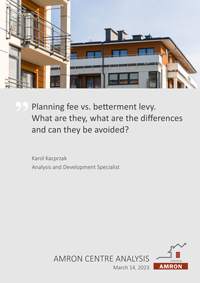
PLANNING FEE VS. BETTERMENT LEVY. WHAT ARE THEY, WHAT
ARE THE DIFFERENCES AND CAN THEY BE AVOIDED?
March 14, 2023
The obligations of the parties to the real estate sale transaction are affected, among others, by its legal status and other factual circumstances linked to it. Two of the public law obligations closely related to real estate transactions are often confused with each other, even though they have been functioning in the Polish legal system for many years. Their imposition is most often a significant financial burden for property owners. We are talking about betterment levy and planning fee. In this article you will find the answer to when these fees may be imposed, who sets them and what can be done to mitigate the risk of them being incurred.
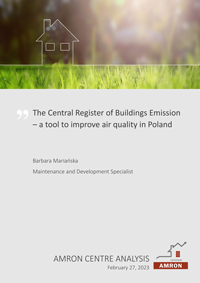
Nowadays, both citizens and state authorities are increasingly paying attention to the ecological aspects of their activities and attempting to reduce the negative impact of urbanization on the natural environment. One of the disadvantageous phenomena that we as a society have an impact on is the deterioration of air quality. It is mostly caused by the use of outdated heat sources as a method of heating buildings.
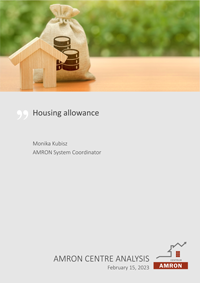
According to InfoMonitor S.A. Economic Information Bureau, high bills for electricity, gas and water are the most burdensome expenses for Poles. Other problematic expenses are those related to the purchase of fuel, food, heating fuels, and expenses for rent or loan instalments. At the end of October 2022, the total value of consumer debt was nearly PLN 77.4 billion, and almost 2.7 million people already had a problem with paying their current obligations.

Last Recommendation J draft amendments concerning the policy of data gathering and processing on the real estate market include PHI certificate provision. Banks will be obliged to collect information on buildings being certified. According to the reference, it will have a crucial impact on property value. This certificate validates that all passive building standards are achieved.
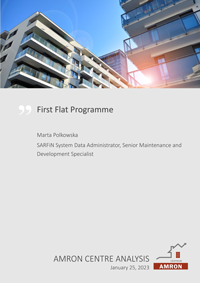
In mid-December last year, the Ministry of Economic Development and Technology announced the preparation of a new, comprehensive programme of support for people who want to buy their first flat. This programme will consist of two solutions, the first of which is addressed to people who are planning to buy an apartment now, the second to those who are planning to do so, but in a few years' time.

With the prevailing energy crisis, as well as rising inflation, from spring 2023 it will be mandatory for owners of single-family houses and flats to pay for an energy performance certificate. In what circumstances and who will be required to have such a document? What will be the penalties for not having it?

The long-lost competitiveness is beginning to return to the real estate market. Rising interest rates, with persistently high prices, have significantly reduced the creditworthiness of potential buyers. As a result, fewer and fewer people can afford to buy their own flat. Responding to the economic situation, developers have begun to reach for various solutions to attract customers to their investment. One of them is the proposal to finish the apartment in a turnkey standard.

Until the mortgage, which is the basic collateral of a mortgage loan, is effectively entered into the mortgage register of the property, bank is exposed to higher risk related to inadequate collateral for the credit facility. As a consequence, banks used to require a temporary collateral in form of so-called bridge insurance for the period from disbursement of the loan till the mortgage is established, i.e. until the date, when the registration of the mortgage in mortgage register is valid.
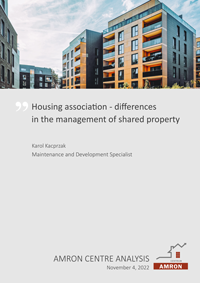
The fundamental differences between large and small housing association are the legal basis, on which they operate. Knowledge of these differences and of the fact that with the ownership of premises comes a share in the common property can be helpful when making decisions on purchase of a flat.

Attempts to answer the question ‘to buy or to rent’ have been appearing in the publications of many housing market analysts for quite a long time. Naturally, the answer is not obvious. We all know pros and cons of both forms of meeting housing needs. Buying a flat, even when taking a long-term mortgage loan, is also a form of saving, investing owned or accumulated capital, building a sense of long-term stability and security, also in the context of having a source of permanent rental income.
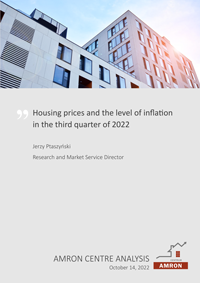
Central Statistical Office announced recently the so-called quick estimate of the Consumer Price Index, which in September 2022 was quoted at 17.2%. Inflation at a similar level was recorded last time in February 1997. Therefore, it is the highest notation of inflation in the current century. What matters the most from the point of view of both mortgage and housing markets is that this increase exceeded analysts' forecasts and it makes the following decisions on further increases in interest rates even more plausible.

The change to the Spatial Planning and Development Act is a part of the National Reconstruction Plan. The reform is expected to improve cooperation between local government units and investors. It assumes simplification of planning procedures, clarification of rules for issuing land development decisions, or replacement of the study of conditions with a general plan.
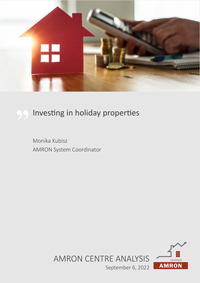
In times of rising inflation, it is good to find the right way to protect and multiply your savings. There are many options for increasing capital, such as purchasing of government bonds, shares on the Stock Exchange, mutual funds, setting up deposits and savings accounts, investing in gold or real estate.
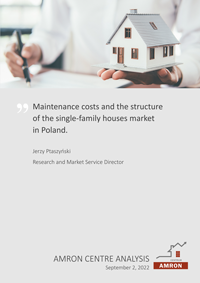
Year 2022 is another period of dynamic increases in home maintenance costs. According to data from the Central Statistical Office in July this year, these costs were higher than in the corresponding period of 2021 by an average of 25.3%. The fastest increases were in gas and fuel costs - by 44.9% and as much as 131.2%, respectively. There are approximately 5.5 million single-family buildings in Poland, inhabited by more than half of our country's population.
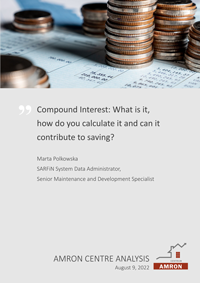
According to an annual survey conducted by the Public Opinion Research Centre (CBOS), in 2022, as many as 58% of surveyed Poles declared having savings, compared to 23% in 2007. Despite the significant increase in the number of savers, Poles are still reluctant to invest their money, which loses its value over time. It is well known that inflation is the enemy of savings and investments.
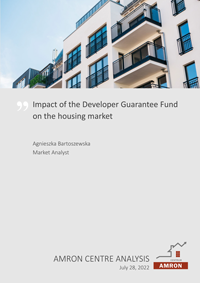
On July 1, 2022, the act on protection of rights of buyers of residential premises or single-family houses and the Developer Guarantee Fund (DFG) entered into force. It ensures the protection of payments made by customers who buy flats or houses on the primary market, the sale of which started after 1 July 2022.
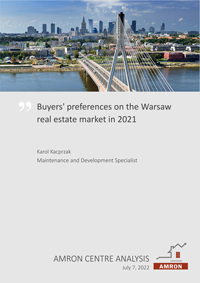
Buyers’ behaviour on the real estate market is often the subject of analysis by economic scientists and real estate professionals. Preferences are divided into revealed and declared. Declared preferences refer to the behaviour of potential consumers at the time of the interview or survey. The other ones relate to the actual market choices made by consumers and can be analysed using the transaction prices database. The main objective of the survey of buyer preferences is to gain knowledge of what influences the decision to purchase a dwelling, while also influencing demand on the housing market.
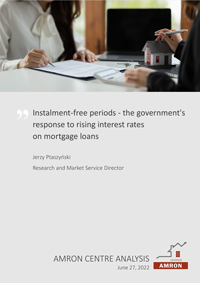
On its last session, on June 8 this year, Monetary Policy Council (NBP) took the subsequent decision to raise interest rates. As experts expected, NBP reference rate was increased by 75 basis points. This was a response to dynamically growing inflation, accelerating from month to month. According to the data of the Central Statistical Office, consumer price index increased in May 2022 by 13.9% compared to the same month last year. What is worse, it is difficult to expect any change in this trend in the near future.

The installation of photovoltaic modules has been especially popular in recent years. The common use of this type of energy generation is mainly influenced by the idea of saving money by using renewable energies, which is also supported by subsidies, e. g. from the “My Energy” programme. Solar radiation can be converted into electrical energy or used for water heating. However, the optimal use of photovoltaic modules requires a sufficient amount of solar energy, and unfortunately the location of the house and the weather conditions might not be conducive to energy generation. The answer to these doubts is a solar potential map.
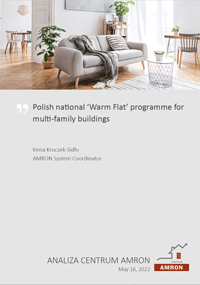
In multi-family buildings that have been used for several decades, the consumption of primary non-renewable energy (Epis) much higher than in newly constructed ones, which results from technical solutions available at the time the buildings were constructed, not providing efficient thermal insulating capacity. As a result of long lifespan, many existing buildings are in bad technical condition and require complete renovation. The excessive heat loses, caused by, among others, lack of thermal insulation, lack of tightness in the external thermal insulation system or so-called thermal bridges, i.e. places in the walls, ceilings or roof, where the heat is excessively lost, results in increased use of energy for heating the building.

Aerial photography is an innovative form of object representation and serves many areas of the economy, including the construction sector. Aerial photographs are commonly used to present investments at various stages. Photos taken by satellites, as well as unmanned aerial vehicles - drones, are used to create an orthophotomap. Orthophotomap created in the process of transformation aerial photos is invaluable in the real estate industry, for construction investments, planning and site inventory.

Poland is in a very unfavourable geopolitical position. The events taking place beyond our eastern border have a direct and negative impact on the Polish economy. In mid-November 2021, the migrant crisis on the border with Belarus escalated. Unfortunately, the situation is still tense and attempts to enter Poland illegally are still being recorded. On February 24, 2022, Russia invaded Ukraine. Since then, 2.415 million war refugees have arrived to our country (as of April 1, 2022). The consequences of these tragic events affect the most important branches of the Polish economy, including the real estate market, where changes are usually slower, but are already noticeable.
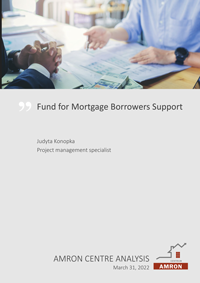
On 8 March, 2022 the Monetary Policy Council raised the reference interest rate once again. This time the rate was increased by 0.75 basis points and reached the level of 3.5%, which is the highest value since February 2013. The Monetary Policy Council has been systematically raising the main interest rate every month since October 2021, which results in another increase in instalments of variable interest rate loans. These types of loans dominate in Poland.
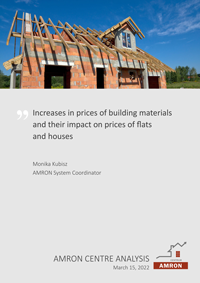
Construction costs of apartments and houses depend on many factors, such as technology, cost of building materials, cost of work, cost of a construction project, building area or standard of an apartment or a house. From year to year, construction costs increase, which is mainly caused by rising prices of building materials, an increase in employment costs and a low supply of investment land, and hence an increase in land prices.

On November 15, 2021, the President of the Republic of Poland signed the Guaranteed Housing Loan Act, which is a part of the "Housing without down-payment" programme that comes into force in 2022. New regulations are designed to make home financing more accessible to people who are creditworthy but have not built up savings of 10-20% of the value of the purchased property. The Act introduces a number of conditions that must be met in order to benefit from the programme.
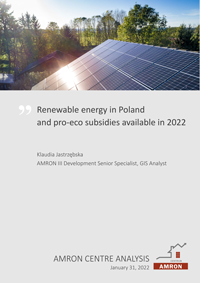
The ‘green energy’ gains popularity in Poland, as it is related to considerable environmental benefits and at the same time – significant savings in energy costs compared to costs of traditionally produced energy. As the prices of electricity and coal has been constantly increasing, renewable energy appears to be more and more attractive.
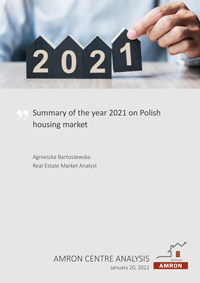
The year 2021 did not bring the end of the COVID-19 pandemic, but it did bring many other significant events. It was another period of record performance on the residential real estate market in Poland. A variety of factors contributed to the dynamic increase in residential premises over the past year. As in previous years, buyers’ interest continued to grow and developers struggled to meet the demand. The good situation on the market was also influenced by factors in its environment, including, among others, a significant increase in inflation, a dynamic increase of prices, especially of construction materials and land for development, as well as changes in the situation on the housing loan market at the end of the year.

The government plans to change the regulations on expropriation and compensation for expropriated property. Intended changes include amendments to the act on real estate management, as well as to a number of special acts (energy, road and rail). The main purpose is to resign from so-called principle of benefits in the valuation of expropriated property, determining the amount of due compensation.
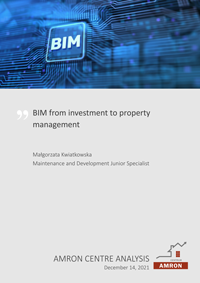
More and more new technological solutions are applied in the construction industry, just as in other sectors of the economy. One of such solutions is BIM technology. Implementation of BIM already in the early stages of an investment and its consistent use during the project can allow for easy integration of all the components of the investment stage, resulting in the subsequent efficient management of the property.

For most people, buying a flat is a moment in life that evokes a lot of emotions. However, before you move into your new dream apartment bought from the developer, a technical acceptance of a flat must be conducted. This is the last and the most important step before receiving the keys. What is a technical acceptance of a flat and why is it important? You will find out this in this article.

Cities cover only 2% of the Earth's surface, but they have a significant impact on the climate crisis. They generate about 70% of the world's greenhouse gas emissions and have a large potential to gradually reduce this high number. Today, more than half of humanity lives in cities. This number is constantly growing - according to UN forecasts, by 2050 68% of the world's population will live in cities, areas that are very vulnerable to the effects of climate change. The environmental impact will also increase.

As a consequence of lenient mortgage lending criteria applied nowadays by banks, more and more Poles can afford to buy their own dwelling. According to AMRON-SARFiN Report 2/2021, the number of loans granted in the second quarter of 2021 increased by 17.21% compared to the previous quarter. Before implementing a plan to purchase a dwelling, it is good to know all details related to legal aspects of the transaction, including types of contracts and rights they ensure for the contracting parties.

According to the latest estimates of the Central Statistical Office (CSO), the rate of economic growth expressed in Gross Domestic Product (GDP) in the second quarter of 2021 was the highest in the Polish history. It reached as much as 11.1%, so we managed to make up for the pandemic losses. This was not the only record that our country has achieved recently, but unfortunately in this case there is no reason for optimism. Inflation is rising alarmingly and its recent rate is at the highest level for 20 years. In 2021, inflation ranged from 2.4% in February to 5.5% in August year-on-year. In addition, Poland is the second EU Member State after Estonia with the highest inflation.

Record low interest rates, which have been maintained for several years, and loosening of the banks' requirements regarding down-payment have a strong impact on high demand on the housing market, which translates into economic growth. Since 2016, more and more housing loans have been granted each year. A slowdown of the upward trend could be observed only in 2020. According to the data presented in the AMRON-SARFiN Report, the number of housing loans granted in 2020 amounted to 204 170, which was lower by 3.13% than the number recorded in 2019.

Recent quarters have brought dynamic changes in European economies. COVID-19 pandemic and restrictions imposed in its consequence, as well as activities aimed at counteracting their negative effects, have had a significant impact on the housing markets of European cities, changing not only the level of prices, but also rents. Therefore, we decided to review prices and rent levels in capitals of EU countries.
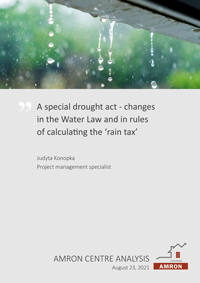
Public consultations on the draft Act on investments in the field of drought prevention dated August 12, 2020 are completed. The comprehensive draft act prepared by Ministry of Maritime Economy and Inland Navigation resulted from work of the inter-ministerial team dealing with drought in Poland and was consulted in all voivodeships under the ‘Stop Drought Program’.

The COVID-19 pandemic has left its mark on the construction industry. The global situation has affected the speed of land purchase decisions and increased interest in building homes. The popularity of single-family houses is constantly growing, and this trend is strongly reinforced by fears of further pandemic waves and the imposition of remote working as a standard operating model. More and more people appreciate the opportunity to own their own home with a garden or recreational plot.
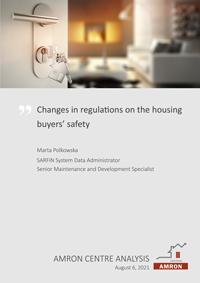
On May 20, 2021, the Parliament passed an act on the protection of rights of buyers of residential premises or single-family homes and on a Developer Guarantee Fund prepared by the President of the Office of Competition and Consumer Protection. This is an amendment to so-called Development Act which came into force on April 29, 2012.

During the press conference on fundamentals of the Polish Deal programme, the planned changes in legal aspects of single-family construction process were presented. New provisions were inspired by previously introduced solutions concerning construction of a small recreation house and provide construction of a single-family house of a covered area not exceeding 70 sqm based only on a notification.

As of July 1, 2021, you no longer need to leave your home to apply for a construction permit. Via e-budownictwo.gunb.gov.pl website you may submit 23 applications related to the construction process. As the Ministry of Development, Labour and Technology (MRPiT) emphasises that this website will be a tool that simplifies and reduces the time of the construction process.

Spatial order is a broad and general concept that has a significant impact on public spaces. In addition, it is a subjective and relative concept, so it is difficult to have a universal definition of it. In the context of this article, spatial order will be understood as a multidimensional way of shaping space, the main goal of which is to achieve harmony, legibility and proportionality. Its formation should take into account social, economic, natural and cultural needs. The space, which is shaped with spatial order in mind, is tidy, of high compositional and aesthetic values, and the objects are situated in accordance with their nature and functions they are to perform.

Polish Deal, a new social and economic programme announced on May 15, 2021 by the Prime Minister Mateusz Morawiecki, implies new regulations intended to be some kind of an energy boost for weakened, post-pandemic economy. As the Programme does not relate much to the economy itself, two proposals draw particular attention of the public: subsidies for housing purchases called ‘housing voucher’ and the state guarantee for mortgage borrowers.

COVID19 pandemic has brought significant turbulences in the real estate market. Commercial real estate market, including primarily it’s retail and office sectors, was the most affected by the pandemic, while on the housing market the strongest impact of the pandemic was seen in the individual rental segment. Based on these changes, already in the second half of 2020 some observers and participants of the housing market indicated a significant increase in the interest in purchasing or building of a single-family house.

Every city faces many economic, social and environmental challenges. Therefore, effective solutions are needed to mitigate these problems in order to ensure the best possible quality of life for city dwellers. Increasingly, technology is being used to influence whether a city is smart.
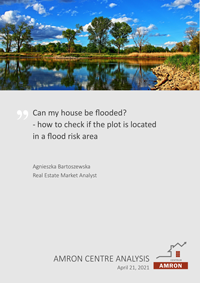
When you want to buy a piece of land for building a new house, you should check not only the legal status of the property or infrastructure utilities for the plot, but also you should take account of surroundings. In that case, the sixty-four-dollar question should be: is my building plot located in a floodplain? Flood is a big problem that threatens people’s lives and their property. But how to check it? This article aims to help you in search of an answer to this question.
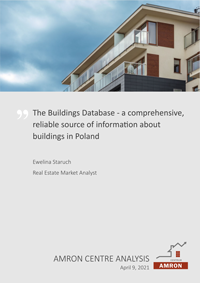
AMRON Centre is the originator of the Buildings Database project. Its main goal is to gather reliable and standardized information about buildings and their surroundings. In our database we organize and verify information, which are currently dispersed, collected in many databases and registers belonging to government units, as well as commercial entities.

Real estate expropriation is one of the procedures described in the Polish Act of August 21, 1997 on Real Estate Management (Journal of Laws 2020, item 1990) that regards to the possibility of depriving or limiting (under an administrative decision) the right of ownership, perpetual usufruct or the right in rem to real estate. This procedure is possible only for real estate located in areas designated in local spatial development plans for public purposes or for real estate with a binding decision to determine the location of a public investment.

The European Banking Authority (EBA) published the final version of the Guidelines on loan origination and monitoring on May 29, 2020. They are in response to the European Commission's action plan, the main objective of which is to reduce the level of non-performing loans at banks in the European Union.
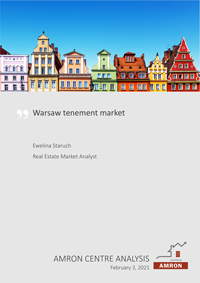
Tenement houses – some of them are neglected and have shabby facades with plaster falling off the walls, while others impress because they are richly decorated and maintained in excellent condition. Living in a historical and well-kept tenement house is currently synonymous with luxury that costs a lot. In Warsaw, a square meter of a floor area in tenement house is on average more expensive than in the new building. It is therefore not surprising that tenement houses are attracting more and more interest, not only among enthusiasts of old buildings with atmospheric interiors, but also among investors.
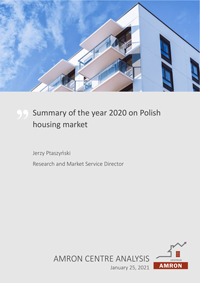
Despite disturbing information about the coronavirus pandemic threat that was coming from China, the beginning of 2020 on the real estate market in Poland was another period of growth. Demand for residential real estate remained high, mainly due to low NBP interest rates (reference rate at 1.5%), rising inflation and high price availability of housing. As a result, prices reached new records, flats were sold even within a few hours, the offer remained at a stable, high level and developers started new investments. Slowing economic growth was believed to be the main threat to the demand on residential market. Combined with high nominal housing prices, it was the source of expectations for a change in the market trend.
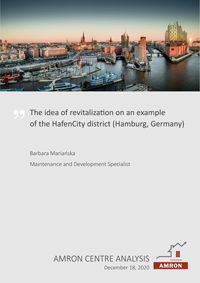
Revitalization is a concept heard more and more often in the context of space transformation, especially in big cities. According to Art. 2 of the Revitalization Act of October 9, 2015 (Journal of Laws of 2020, item 802), revitalization in Poland is understood as a process of recovering from a crisis state, through integrated actions for the local community, space and economy, territorially focused, carried out by revitalization stakeholders on the basis of municipal revitalization program. This means that apart from its spatial significance, it is also supposed to affect the social and economic sphere of the area.

One-quarter period of restrictions related with the pandemic turned out to be too short to change residential market trends in a meaningful and lasting way. Contrary to some market observers expectations, there was no downturn of the trend and no decline in home prices. Moreover, the activity of market participants, after a short break, returned to the level close to the pre-pandemic level, and even, in case of developers, clearly exceeded it. At the same time, however, situation on the residential rental market developed differently.

When investing on the real estate market or buying a property for own use, it should be remembered that the purchaser becomes the owner of the rights to the property. However, before signing a contract it is worth checking what rights and restrictions are imposed on the subject of the transaction. Special attention should be paid to limited rights in rem, which include usufruct, servitude, pledge, cooperative ownership right to premises and mortgage.
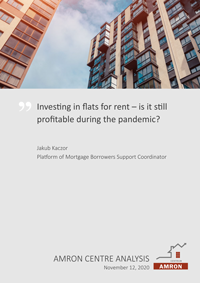
There are as many reasons for investing in real estate, as investors, who decided to do so. But is investing in real estate right now, at the pandemic situation, still possible and profitable? Is it still true that purchase of a flat for rent will secure our money and ensure peace of mind?
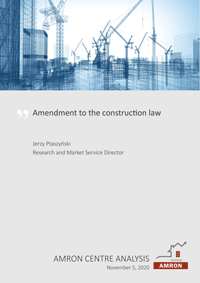
On September 19, another amendment to the construction law entered into force. Changes introduced by the Act amending the construction law as of February 13, 2020 have a very wide scope and their purpose is not only to simplify and accelerate the investment process, but also to organize several important areas of regulations related to the construction and use of buildings.
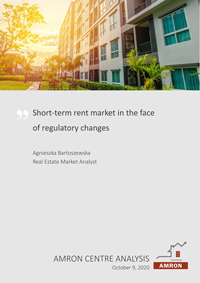
Short-term rental has become a more and more popular option of accommodation per night. Development of services such as Airbnb or Booking.com has strongly contributed to it. Since the very beginning of that type of accommodation, tourists have been very enthusiastic about it. This trend is apparent in big cities and touristic destinations.

Quite recently, the housing market in Poland was recording an impressive boom and the prospect of a correction seemed remote. Dwellings prices kept rising, flats had been sold really quickly and developers willingly started new investments. But then the coronavirus-related restrictions came, the entire economy unexpectedly stopped and all real estate participants held their breath waiting for what would happen next.
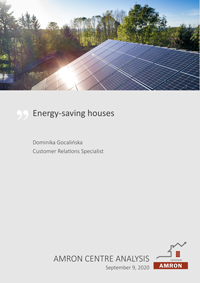
Increases in energy prices and heating costs of buildings significantly influence the growing interest in modern technologies that allow to reduce these expenses. In order to lessen the house's demand for heat, it is good to get a closer look at the concept of an energy-efficient building.

Real estates are perceived as good investment objects. According to the average Pole, who does not invest professionally in shares, bonds or his own company, investing on the real estate market is the best and the safest way of making a profit. The current interest on deposit accounts in Polish banks is at a record low level and does not protect savings from inflation. Therefore it is not surprising that Poles are interested in alternative forms of investment and very often choose real estates due to relatively low risk of loss.

The H-frame and the large-panel are two competitive technologies for construction of multi-family buildings, that were used in Poland in the second half of the 20th century. Both are based on the use of prefabricated and repeatable elements that make the construction of the building process much faster and less complicated than other technologies. The need to speed up the construction process appeared in Poland after the end of World War II, when the vast majority of the population was deprived of their homes because of war damages. Social policy of the Polish People’s Republic was based, among others,on the rapid restoration and provision of housing resources for society. Prefabricated technologies were used to achieve this goal.
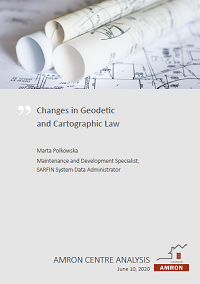
On April 30, 2020, the Act amending Geodetic and Cartographic Law and some other acts was published. The main reason of the amendment was to specify the rules of geodetic and cartographic works performance and to clarify legal relations between the contractors of the works and the geodetic and cartographic administration bodies. In addition, changes were aimed to facilitate the implementation of geodetic and cartographic works, including reduction of the number of bureaucratic procedures and, consequently, accelerate the entire investment and construction process.

Quite recently, the housing market was booming and another record-breaking results were noted in mortgage sales. Increasing wages, stable situation on the labour market and low interest rates encouraged to purchase dwellings and take out housing loans. However, the appearance of the ‘black swan’ in March 2020 - the new coronavirus disease, changed the situation radically.
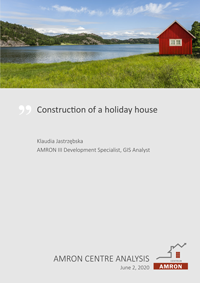
Due to an outbreak of a COVID-19 epidemic, it is easy to notice some changes in preferences of the housing market participants in Poland. Obligatory lock-down resulted in increased popularity of single-family houses, as well as construction and recreation plots. One of the possible option of ’escaping‘ from the city and the flat, where all inhabitants are forced to spend 24 hours a day, is a purchase of a recreation plot and construction of a small holiday house.

‘I will buy a flat. For cash’ - I often find this type of leaflets in my letterbox in a block in Warsaw's Wola. Sometimes there are even a few such announcements per week. All of them read and look similar. Usually they are handwritten and photocopied, signed only by a first name and a contact phone number of an author, who often is interested in a flat for renovation and always adds the ’I will buy for cash’ slogan. What is the point of these announcements? As it turns out, this is one of the ways how housing “flippers” work.

Coronavirus pandemic and suspended business activity as a result of a global lockdown raise questions about the future. Crisis seems to be unavoidable, but the scale of it is hard to predict yet. On the mortgage market, problems with debt servicing during the following six months will be covered by an option to suspend the whole instalment or its part. But what if some borrowers will not be able to repay their loans after that period? Termination of loan agreements, enforcement proceedings, bailiff auctions? Or maybe a takeover of a property in return for release from a debt?
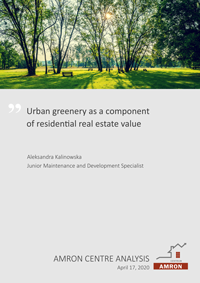
Nowadays greenery in the city is being referred to as ‘green infrastructure’. It performs an undeniable climate function and it has become very valuable and desirable aspect in humans life. Among other things, greenery is important when choosing the location of a new flat. Building in a compact way, even at the expense of green areas is not uncommon in Poland. The undeniable fact is that the proximity of greenery is what makes the location of the apartment attractive. How that affects the prices?

In recent discussion about the future of construction and development market and especially the factors affecting the increase of the housing construction costs, it is the new regulation on Technical Conditions that seems to be pointed on more and more frequently. Technical Conditions 2021 (in short ‘WT 2021’) are the new requirements for newly constructed buildings, which will come into force from the beginning of 2021.
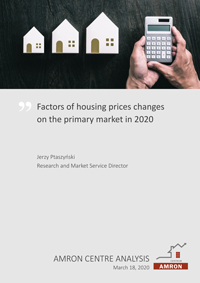
Exceeding the historical maximum nominalhousing prices in most of the largest Polish cities has triggered, by simple analogies to the previous business cycle peak, expectations for their sharp falls, speculation about the rise of the speculative bubble and the prospects of its burst. Current market situation is however decisively different from the one we dealt with almost twelve years ago.

2019 was the second-best year in the history of the developer market in terms of the number of sales of new flats, which amounted to 65.4 thousand. This is only 10% less than in the record year 2017, when the ‘Flat for Youth’ Programme was eligible for application. The annual increase in property prices did not exceed 10%. Despite the price increase, demand was at a high level. The six largest Polish cities were analysed, based on the latest data published by the National Bank of Poland.
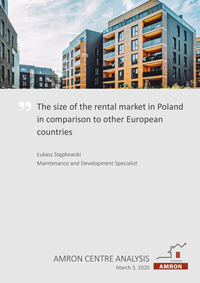
Almost every twentieth adult in Poland lives in a flat rented at market prices. It is almost twice as much as 8 years ago. Nevertheless, we are still far from the European leaders. For example, in Switzerland half of the citizens rent apartments at market prices and in Germany or Denmark this percentage is around 40%.
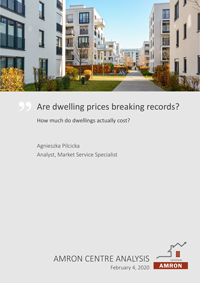
We have been observed slight, systematic increases in dwellings prices in the largest Polish cities for several years, but in recent quarters we have noted an acceleration of this trend, when quarterly increases in both primary and secondary markets have amounted to even 5 - 6%. In Q3 2019 the average transaction prices of 1 sqm of floor area of dwellings in the largest Polish agglomerations increased by approx. 4% - this phenomenon was observed not only in the capital city, but also in Bialystok or Katowice agglomeration.
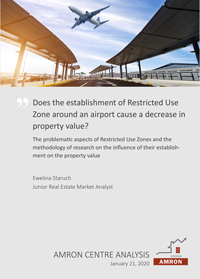
The aviation market in Poland is currently in a phase of dynamic development. In recent years, significant increases have been observed in both the passenger traffic and the number of air operations. Furthermore, airport-related areas are constantly expanding. The need to integrate the airport spaces and the nearest situated buildings, the necessity for rational development of areas adjacent to airports, as well as the growing acoustic discomfort of residents were the main reasons for creating Restricted Use Zones

Modern technologies surround us almost every day: at work, at home or on the road. This is also the case in the real estate market. Every day, new and more innovative measures to improve work are presented. Along with technological progress, developers began to ask themselves: how to apply and make use from modern technological solutions, to improve according the competitiveness of real estate in the eyes of potential buyers?
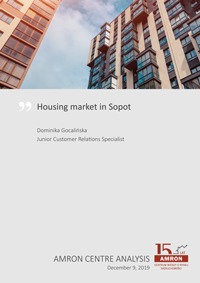
Sopot – seaside resort, which every summer attracts a huge number of tourists, together with Gdynia and Gdansk forms the Tri-City agglomeration with a population of over one million. Situated on the south-western shore of the Gulf of Gdansk, it is the smallest city in terms of population with county rights in Poland. Sopot’s population is decreasing year by year. This trend has been taking place for years and there is no indication that the situation will change. According to data from the Central Statistical Office, in 2018 the city was inhabited by 36,046 people, i.e. 7% less than in 2008. Decreasing number of inhabitants in the pre-working and productive age is caused primarily by very high prices of flats.

Although the rental market in Poland has not yet reached such a high level as in Western European countries, it has a great potential and its further development is expected. More and more citizens resign from buying a flat in favour of renting. The reasons for that are mainly social factors, among which there is a strong propensity to migrate, less need for life stabilization and a greater mobility associated with the changing labour market. Furthermore, people often become tenants because buying the own flat is limited by lack of creditworthiness or too high own contribution required by the bank for the mortgage loan.

While in a large part of European countries, fixed rate mortgage loans constitute the majority of the market, in Poland almost all mortgage loans are based on variable interest rates. The proposal to amend the S recommendation, announced by the Polish Financial Supervision Authority in June last year, imposing an obligation on banks to offer fixed rate mortgage loans, has been in the expert consultations phase for over a year.

We have already got used to reports on continuing prosperity on Polish housing market. For a couple of years low interest rates, improving financial status of the households and, consequently, unprecedentedly high level of consumer optimism are the most important factors triggering increase in demand for flats and having impact on their prices. Price increases, however, are not the only change observed on the Polish housing market. Central Statistical Office data show that for several years we have also witnessed a significant growth in terms of a scale of the housing market in Poland. One of the reasons of this phenomenon is certainly the increase in the number of purchases flats for rent. However, it seems that an increase in Poles' "mobility" understood as readiness to change their place of residence or to adapt the size of the apartment to real needs may also play a significant role here.

Illegal building is defined as every constriction facility raised with no valid construction permit, no construction application or despite the authorities’ object to documents submitted by the investor. The non-notified extension to the existing building may also be considered as illegal building.
No one actually knows the scale of the illegal buildings problem. According to estimations of General Construction Supervision Authority, there may be even a half million such buildings in Poland. In 2019, Ministry of Investments and Development announced the programme of changes in rules of legalization of illegal buildings. Will the effects be as good as expected?

The appreciation of housing prices in Poland is not an unique phenomena. In almost all European countries, housing prices have risen significantly over the past 4 years. The record holder in this respect is Hungary, where prices of residential real estate at the end of 2018 reached the level of 132% of prices noted in 2015. The rise in housing prices is not unusual. What is more, it can be a sign of a number of positive phenomena, such as improving condition of the financial sector, increasing purchasing powers of population’s income or positive changes on the labour market. It is important that this growth should be balanced and directly resulted from fundamental factors, i.e. the demand and supply.
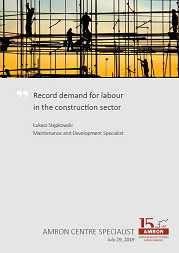
The construction sector, or more broadly - the real estate market, is a kind of test for the Polish economy. By many economists signals from the construction sector are perceived in the macro-prudential dimension or in the early warning categories. According to various estimates, there is deficit between 150,000 to 200,000 employees in the construction industry with diverse qualifications. This shortage mainly comes from demographic changes, the evolution of the market structure itself and the insufficient wage growth.

Spherical houses are associated with the exotic construction of nomadic tribes or science-fiction films rather than the alternative to Polish construction. Most of people are accustomed to the view of houses or residential areas built on a rectangular plan, while dome houses resemble an igloo. Although spherical houses have not gained much popularity yet, they have many advantages that should be considered when choosing an architectural plan.
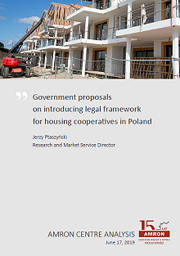
The Ministry of Investment and Development has started consultations on a project of the new law facilitating construction of apartments and single-family houses for own needs in form of a housing cooperative. The project is to introduce a legal framework for housing cooperatives and enable their operation under applicable law, including in particular the Revitalization Act and the Construction Law. It also introduces the rules of real estate acquisition by the members of housing cooperatives.
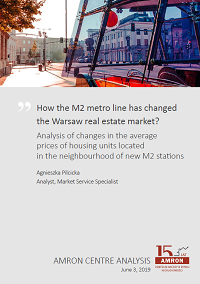
A huge impact of new metro line on real estate market in Warsaw was obvious. Well communicated dwellings are the most valuable, so all participants of the market were well aware that the opening of new metro stations will cause a significant increase in dwellings prices in the close area. No wonder that the information on the beginning of M2 metro line construction encouraged developers to start constructions of not only new residential investments, but also commercial buildings - a good example is Ignacy Daszyński Roundabout area, which is now a new Warsaw's office zone. The answer to the question whether M2 metro line affects the local real estate market is clear, but the question about the scale of this influence remains open.
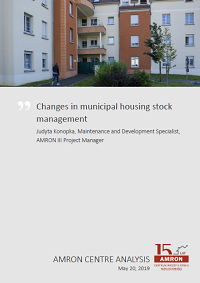
On April 21, 2019 the third part of the Act dated March 22, 2018 on amending i.a. the law on financial support to social premises entered into force. Municipalities are obliged to meet housing needs of local community, especially low income earners. Local governments use municipal housing stock to execute these assignments. In Poland, a deficit of such premises in relations to social needs is a fact. According to GUS, in 2017 there were 63 864 households waiting for municipal dwelling rent and 90 318 for social premises. The number of that type of dwellings has been shrinking year after year, but waiting period for available social housing has not reduced - annually only 16% of persons waiting for that kind of premises receive allotment. Changes resulting in wider municipalities' flexibility in social housing governance may be a remedy for this state.

The ‘Flat Plus’ Programme was introduced on June 3, 2016 as a governmental, comprehensive programme for building cheap apartments for rent with ownership option on the State Treasury and local governments land. The Programme was to be addressed to people, whose income do not allow to apply for a housing loan and, at the same time, exclude them from the beneficiaries of communal flats. Two years later, during the solemn ceremony of handing over keys to the first flats built under the Programme in Biała Podlaska, the letter from Jarosław Kaczyński was read out, in which he wrote: "We would like to build approx.2.5 - 3 million dwellings under the ‘Flat Plus’ Programme in the coming years. It's ambitious, but feasible goal." Does this promise has a chance to come true?

In September last year, a new priority ‘Clean Air’ Programme was launched. The aim of the Programme is to reduce pollutant emissions from obsolete household furnaces combusting low-quality fuel. The Programme is executed by National Fund for Environmental Protection and Water Management in cooperation with Provincial Funds for Environmental Protection and Water Management and is planned to operate in 2018 – 2029 (agreements may be concluded until December 31, 2027). The programme’s budget amounts to PLN 103 billion.
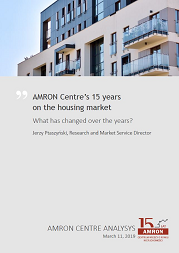
For last 15 years we have witnessed a process of growth and slow maturation on each segment of Polish real estate market. The beginning of that periodwas the time when the development market was just beginning to crawl, the level of financing on the real estate market was, in comparison to the present times, insignificant and the prices of real estate of all types were much lower than they are today.
What has changed over the years?

According to Central Statistical Office’s statistics published on the basis of the last National Population and Housing Census 2011, approx. 19.5 million of Poles - almost 90% of rural population and nearly 30% of inhabitants of towns and cities - live in single family houses. The average usable area of a single family house varies according to location and in cities amounts from 102.7 m2 to 131.4 m2, while in rural areas it ranges from 113.4 m2 to 89.9 m2 . Such housing condition is usual for Poles, who live in houses. How is it in case of much more prosperous persons?
Below you’ll find few the most expensive properties in the world, ranked by American website time.com.
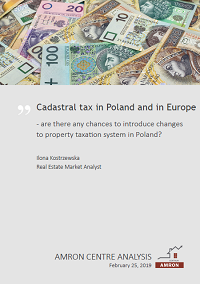
The idea of cadastral tax implementation in Poland for many years has aroused big controversy. At the moment, a real estate tax applicable in Poland is calculated on the basis of the property’s area.
The concept of changing the rules by introducing taxation based on the property’s value was proposed many years ago, but the first legislation related to this issue was the Property Management Act introduced on August 21, 1997. Since then, none of Polish governments decided to introduce any changes in that scope, mostly due to significant aversion of the Polish public toward new fiscal burdens.

Polish market of houses is growing. In first three quarters of the last year 87 188 building construction permits were issued, 77 244 of which were single-family houses. For decades, mainly brick and stone technologies have been known and applied in the construction of single-family buildings in Poland. In Scandinavia or Canada the climate is more severe but wooden-framed houses have taken forefront for many years, while use of wooden construction methods by individual investors in building residential premises in Poland amounted to 0.3% both in 2015 and in 2016. Although this technology is becoming a convenient alternative to traditional brick houses, over the years it has grown into many myths and arouses contradictory opinions.

On January 1, 2019, perpetual usufructuaries of land used for housing purposes became its owners. This is certainly a positive change that orders legal situation of plots, especially in the largest cities, however, due to the labour-intensive obligation of issuing certificates confirming the transformation and the amount of transformation fee, it also caused chaos on the real estate market. In response to numerous complaints from citizens, the government is working on further changes to the principles of transforming the perpetual usufruct into the ownership right. On February 1, 2019 the Senate adopted an amendment to the act on real estate management and the act on transformation of perpetual usufruct of built-up land for housing purposes into ownership right.

Smart city is a city that succeed to develop in the most important fields, basing on ‘intelligent’ combining technology and operations. The most complementary and exhaustive explanation highlights the role of synergy, combination of technology and actions that impact on increase in quality of the key aspects of the city life: spatial management, transportation, ecology, natural resources and the citizens’ awareness. What are the pillars of a smart city? Does any of the Polish cities deserve to be called Intelligent City?

In November last year, the Government Legislation Centre received the fourth version of the draft Act on agriculture system shaping and on amendments to certain other acts. The aim of amendments is to relax the regulations that limited the agricultural land trade, which have been in force since April 30, 2016 and were introduced by the Act on suspension of the Treasury agricultural land sale and on amendments to certain other acts. What are the changes? What are the market expectations? Who will the changes be beneficial for?

In 2018, as in previous years, the situation on both residential real estate and mortgage markets was shaped primarily by good economic situation, resulting in wages increase and - in consequence - increase in purchasing power of income, as well as NBP interest rates, maintaining low costs of mortgage loan service and encouraging to search for alternative methods of investing savings. How were the average housing prices in individual Polish cities shaped? What legal regulations were introduced in 2018?

Government programme ‘Family on Its Own’ was introduced in 2007 and it contributed to covering the housing needs of over 192 thousand of households. According to the Programme’s assumptions, beneficiaries, who met the criteria set in the relevant act and who were granted a preferential mortgage loan, were supported by state subsidy accounting for 50% of the interest component of loan instalment. The subsidy was paid for the first eight years of the mortgage loan repayment. Starting from 2015, after the eight years of ‘interest vacations’, the following loans have started the regular repayment schedule, which meant increased instalment amounts.

International Monetary Fund predicts that the global economic growth in 2019 will be slightly lower than previously forecasted 3.8 percent and will amount to 3.7 percent. Trade war between the US and China, slightly weaker results of European and other key global economies, as well as increases of interest rates in developed countries are indicated as main reasons of such prognosis. Brexit, which is due to happen in March 2019, will also have important impact on European economies.
How will Polish housing market perform in the months to come?
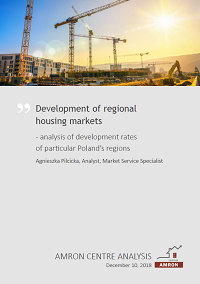
On housing market in Poland, a significant recovery has been noted for several years. In the period from 2014 to 2017, all indicators describing the results of this sector increased. Comparing the results of 2014 and 2017 published by the Central Statistical Office, the number of dwellings completed increased by 25%, the number of constructions started increased by 39%, while the increase in number of construction permits issued amounted to 60%. At the end of 2018 (based on the results of the first 10 months), the increases may amount to 30%, 50% and even 60% respectively in comparison to 2014.
However, the regional housing markets have been developing at different rates.

In the newest proposition of amendment to Recommendation S, Financial Supervision Authority introduced new mortgage loan model with an option called ‘key for debt’, which enables the borrower to repay the loan by transferring the property ownership right to the bank. The idea of transferring the property right in return for debt release was probably taken from American market, where such solution has been practised for a long time. What are the chances to implement such solution in Poland?

Government draft bill amending the Act on Personal Income Tax, the Act on Corporate Income Tax and some other acts was approved by the Council of Ministers and submitted to the Sejm.
Proposed changes, which will come into force on January 1, 2019, can be regarded as beneficial for taxpayers, in particular for inheritors, divorcees and persons allocating the income obtained from the inherited property’s sale for purchase of another real estate on the primary market.
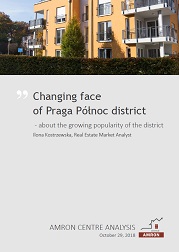
Form one hand, for many years it has stood for the most dangerous district both for inhabitants and tourists. From the other hand, particularly in last few years, due to its exceptional character, it became an oasis for artists and manufacturers, a basin of trendy clubs, a place attracting both foreign tourists and people who look for original place to live and therefore – a location of increased interests of developers and investors. What are the reasons for changes in the perception of the district by residents and investors?
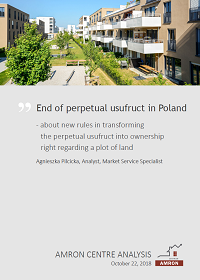
Perpetual usufructuaries of lands used for housing purposes will become owners of such plots, effective on January 1, 2019. Perpetual usufruct will be transformed into ownership right under payment. Future owners will be obliged to pay annual ‘transformation fee’ for the period of 20 years. Under which conditions transformation may take place? What are the expected results from perpetual usufructuaries’ point of view?

Increasing shortage of investment plots imposes developers to take prompt decisions on purchases such plots.
Due to the spatial nature of the issue, GIS tools seem to be the best solution for analysing the investment potential of the plot. Spatial analysis may be helpful not only for assessing particular properties, but also for choosing new investments locations. Due to standardisation and quantification of determinants of the investment potential of plots of land, analysis based on multi-criteria evaluation enables the objective and comparable assessment of the location and neighbourhood of the specific plot.

A special housing law enables the implementation of housing investments and investments that are not in accordance with local spatial development plans. Local plans result from the communal spatial policy’s implementation, which imposes restrictions and standards for land development in order to protect the public interest and ensure a healthy, sustainable living environment. Introducing a parallel path to the development permit adds additional chaos in the spatial policy of the commune.
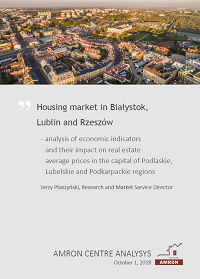
Despite significant progress observed within recent, Podlaskie, Lubelskie and Podkarpackie voivodships remain one of the least developed and least prosperous regions of both Poland and the entire European Union. The level of wages is similar in all provinces of the region, however, the demographic situation in the capitals of analysed voivodships is highly diversified. Most analyses consider the whole Eastern Poland region as relatively homogeneous, however, the sound examination of the situation on residential markets in Białystok, Lublin and Rzeszów proves major differences between them.
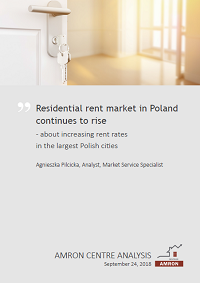
Rental market in Poland is still small, but it has developed significantly in the last few years. According to Eurostat data as for 2017, 4.3% of Poles (1.6 million out of the whole population) lived in apartments rented on market terms, while in Germany tenants accounted for 38% of the population. However, comparison of the latest Poland's result with statistics for the year 2009, when tenants accounted for only 2.2% of the population, showed rapid progress in that field. According to developers, currently every third apartment on primary market is bought for investment purposes, and approximately 30 - 40% of premises are purchased without the participation of a housing loan.

Prosperity on housing market is driven among others by an increasing number of foreigners, who decide to buy a dwelling in Poland. According to data published by Central Statistical Office (GUS), the number of housing units completed by developers in 2017 amounted to 90.4 thousand. As stated in the MSWiA Report on execution of the act on real estate acquisition by foreigners, in 2017 foreigners purchased over 4.8 thousand dwellings with a total area of almost 305,000 sq.m. Despite the slight slowdown in the upward trend in sale of dwellings to foreigners, the interest of foreign buyers in Polish apartments is still significant.
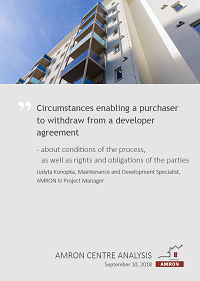
By signing the developer agreement, which is the completion of dream dwelling selection process, both developer and purchaser provide themselves a legal guarantee to execute a specific property acquisition transactions at a fixed price within a time limits. In particular cases the purchaser has legal basis to withdraw, in others - the best solution is to contact the developer and discuss the situation, but in such situation the purchaser must expect some financial consequences. It’s good to have on mind old Latin philosophy pacta sunt servanda, which means that agreements must be kept, so all decisions on signing the contracts should be taken prudently and foresightedly.
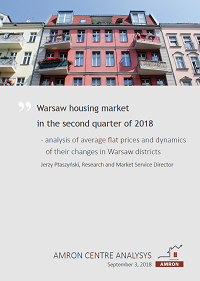
The second quarter of 2018 is the following, already 14th period of the uninterrupted prices increase on housing markets of the largest Polish cities. In comparison with other major Polish cities, the recorded increases in prices were not the highest here - the result was slightly lower than recorded in Krakow and much lower than in Gdansk. Lower than Warsaw’s price increase dynamics was recorded in Wrocław and in Poznan. Warsaw's most expensive district is obviously Śródmieście, where in the second quarter of 2018 the average price per sq.m. of a flat amounted to PLN 12 557. Almost twice lower average price was noted in Rembertów - the average price per sq.m. of a flat amounted there to PLN 6 294.
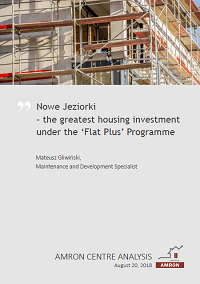
On August 7, a contract for development of a comprehensive project documentation for a housing investment in Warsaw was concluded. A multi-family housing complex comprising of approx. 2.7 thousand apartments for rent located on a plot of 15 hectares in Warsaw district Ursynów is planned to be constructed as part of the ‘Flat Plus’ Programme. The contract was concluded between BGK Nieruchomości S.A. and the winners of the March urban contest for a model housing project: ‘AMC design studios - Andrzej M. Chołdzyński’ and ‘22Architects’. Both studios were awarded ex aequo as winners of the competition for the urban project of the family-friendly residential area Nowe Jeziorki.
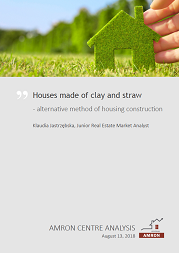
With increasing environmental awareness, natural resources in housing construction became more and more popular. Houses made of clay and straw are becoming increasingly popular in Poland – such buildings do not remind of mud huts, they are actually modern and energy efficient.
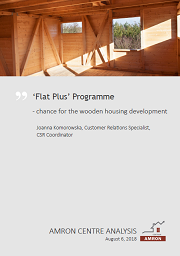
Under the 'Flat Plus' Programme, a wooden housing is planned to be developed. The Sejm has already passed a bill amending the Forest Act and the Environmental Protection Act, establishing a new entity – ‘Polish Wooden Houses’ company (‘Polskie Domy Drewniane’ - PDD).
The idea of implementing wooden construction arose not only by government’s will to increase availability of housing for the public, but also by ecological reasons (natural and renewable material, it is 100% recyclable or biodegradable). From the other hand, doubts concern the quantity and value of forest resources that will be consumed by the investment, as well as
precise origins of wood used in the production.
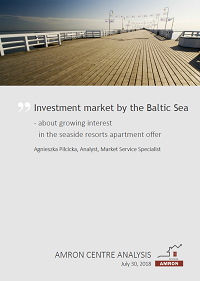
Areas along the coast, mountains and Masurian lakes are the main Polish ‘holiday markets’, however the investment market by the Baltic Sea (especially apart- and condo-hotels) develops the most dynamically. Only about 20%
of buyers purchase apartments by the sea to live in them permanently. Noticing the growing interest of investors
in seaside resorts, developers have significantly increased their offer over the past few years. The profitability
of the most attractive, high standard apartments with a view of the sea, located in prestigious towns often visited
by tourists not only during the holiday season may amount even 8-9%.
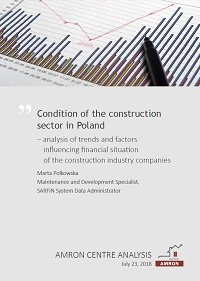
Construction is one of the key sectors of the Polish economy. Despite increase in construction output and positive economic situation ratio, it does not reflect in more favourable financial situation of this industry’s companies.
The number of enterprises with overdue payments increases rapidly. Construction sector faces a number of problems, including unprofitability of investments, labour shortages, introduction of reversed VAT regulation, increase in prices of construction materials, services and employee salaries, as well as difficulties in obtaining bank loans. Construction industry is also particularly sensitive to economy cycles, seasonality of business activity,
labour market situation, new legal regulations, demand fluctuations or investment financing conditions.
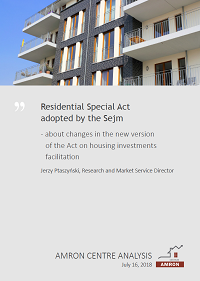
On July 5, the Sejm adopted a law on housing investments facilitation , so-called the ‘Residential Special Act’.
As a result of public consultations, numerous changes were made to the project. The entire decision-making process will be carried out by the commune, without the participation of the voivode. Regulations require compliance
of the decision on the housing investment location with the study, determine provisions regarding the organization of urban and architectural competitions and introduce changes regarding access standards for technical and social infrastructure. The Residential Special Act also includes provisions aimed at unblocking land for housing by automatic transformation of the agricultural land located within the city bounders into building land.
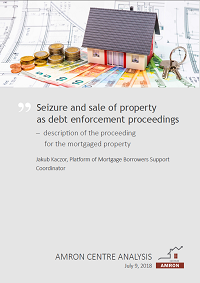
Termination of a loan agreement by a bank that financed or refinanced the property purchase, providing the borrower with payment request for the whole outstanding debt and applying to the court to issue an enforceable title with the enforcement order are actions prior to formal beginning of the forced execution. Next stages are entry of the record on enforcement initiation into the section III of land and mortgage register, contact with the customer, the first and the second auction, and finally the distribution of funds obtained from the sale. Apart from the enforcement proceedings, the eviction is in progress. Mediation efforts between the current owner and the previous one seem to be a positive trend.
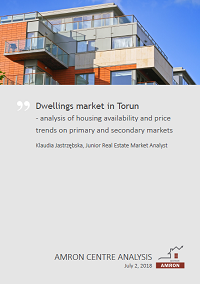
Torun is one of the oldest towns in Poland, the sixteenth greatest Polish town in terms of population, as well as an important economic, touristic, cultural and academic centre. What’s worth mentioning, Torun is also one of the “greenest” Polish towns with green areas (parks etc.) extending to approx. 30% of its total area.
Housing market in Torun is constantly developing, many new investments have recently been stated. In 2017 the record-breaking number of issued construction permits was recorded – it was approx. 135% higher comparing to the previous year, while the number of completed housing units increased by 31%.

On June 21, an Act on Central Communication Port (CPK) signed by the President entered into force. The act is aimed to simplify the implementation of a number of projects within the giant project of an integrated communication hub. It sets out rules and conditions for preparation, financing and implementation of construction investments and accompanying infrastructure around the Central Communication Port. It also specifies rules of land reservation, issue of a location decision and acquisition of real estate, as well as entities competent in the above mentioned matters. Furthermore, it defines the government's proxy for the CPK and the corporate governance carrying out investments.
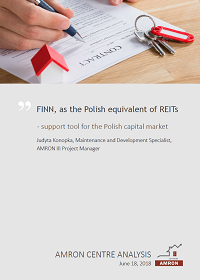
The Ministry of Finance is undertaking another attempt to introduce Polish REITs. Project implementers propose
to introduce encouraging tax treatment for companies dealing with renting residential properties – F.I.N.N. According to the justification for the project: the proposed law on companies investing in real estate lease aim at increase the attractiveness of taking up and conduct economic activity in the housing properties market, as well as raise investment of institutional and private capital on this market. The residential real estate lease market in Poland is of a distributed nature with a low share of business entities. Unlike the version of project from 2016,
tax preferences apply only for companies that rent residential properties.

The ‘Flat for Start’ Programme is a system of rent subsidies for the first tenants of new dwellings and revitalized apartments as part of cooperation between investors and municipalities. Apart from construction of new housing buildings, it constitutes a strategic element of the ‘Flat Plus’ package. The government subsidies will be available to people who cannot afford to buy their own apartment, apply for a housing loan or rent a flat on the market, while the amount of their earnings exclude them from the group of a communal or social flat beneficiaries. According to analysis of the Ministry of Infrastructure and Construction, 40% of Poles are in this situation.

According to the Act of
September 11, 2015 on the elderly, this social category refers to people aged
60 or more. Therefore, it includes both economically active and non-active people,
with full physical and mental capabilities,
as well as people with
dysfunctions, well-off and finding it hard to make ends meet. The problem with offering
an adequate housing offer is a real challenge. Developers and private investors
focused on housing offer dedicated
to wealthier seniors. But the fact is that dominant
amount of retirement pension in male population is PLN 2 177.80 and in female
population - PLN 1 065.38.
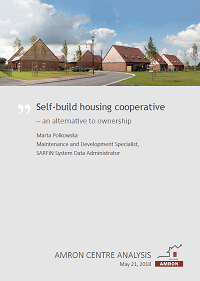
Self-build housing cooperative is a bottom-up, non-profit initiative of a community and participatory character,
in which a group of people, sharing a vision of creating not only flats, but also a community, cooperates in order
to meet their own housing needs. Members of the self-build housing cooperatives decide to cooperate in order to buy land for co-ownership and build a residential housing estate on it, where everyone will have their own housing. Residents decide about financing and the course of the entire investment. Costs of housing construction in this type of initiative may be even 20-30% lower than when purchasing similar flats on the primary market.

On March 15, 2018, a draft act on housing investments facilitation , so-called the ‘Residential Special Act’
was submitted for public consultation. The most radical change introduced by the act is the exclusion of housing investments from the Act of March 27, 2003 on spatial planning and development.
Pursuant to the provisions of the new act, the voivode will issue a decision on determining the location of
a residential investment at the investor's request. Such decision may also be issued in relation to areas
not included in the local spatial development plan or in case when the existing local plan does not provide
housing on a particular plot.
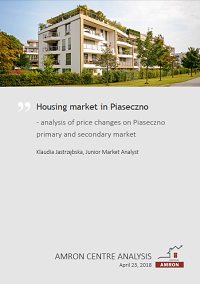
Piaseczno is a town in Mazovian voivodship, located only 17 km south from the centre of Warsaw, extending for 16.22 sq.km. According to Central Statistical Office, at the end of 2016 the population of Piaseczno accounted for 47 092 persons and it has been continuously growing – from 2002 it increased by 13 362 persons.
Systematic increase in number of new housing investments in the whole Piaseczno poviat was recorded from 2013. In 2017 number of construction permits for housing units increased by 56% comparing to the previous year and it amounted to 3 351. Due to growing Piaseczno population, number of completed units has increased as well.
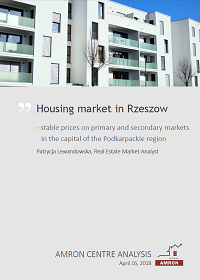
More and more new investments are being undertaken every year on the housing market in Rzeszow. The most popular apartments with an area ranging from 50 to 75 sq. m. accounted for over 50% of the total number of flats sold in 2017. The second place in terms of popularity was taken by flats with an area between 35 and 50 sq. m.
The average price levels of flats on primary and secondary markets in Rzeszow are quite similar. Surprisingly,
from 2012 to the present, the average price of apartments from secondary market oftentimes exceeded the average price of apartments bought on the primary market.
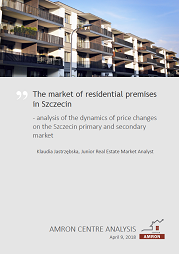
More and more new housing investments in Szczecin are started each year. The year 2017 was the record-breaking from the perspective of new construction permits – there were 4 120 new permits issued in 2017, which was 57% more than in 2016. Despite the Szczecin population has been decreasing since the early 1990s, number of housing units completed in 2017, after significant increase in 2016, remained at a similar level. In 2010 - 2017 most of flats were purchased on secondary market – in 2017, trading volumes noted on the secondary market were over four times higher than on the primary market.
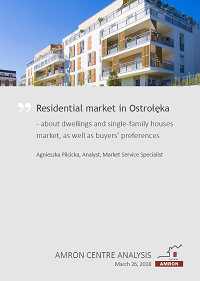
Developers are doing quite well on Ostrołęka real estate market. Over the last few years, several hundred new dwellings have been built. More and more new dwellings are built, and their prices range from about 3 500 to even PLN 4 800 /sq.m. High prices of dwellings on primary market and their worse location prompt buyers to choose dwellings from secondary market, where prices can be lower by even PLN 1 000. Due to the relatively high transaction prices of dwellings and cheap building plots for single-family houses, individual construction is very popular on residential market in Ostrołęka.

The problem with ensuring the right to parking spaces has appeared simultaneously with the appearance of buildings with underground multi-space car parks in Poland and it is caused by the fact that determining the parking place’s borders is confined to marking lines on the ground. This means that parking place cannot be a distinct unit, because it does not meet the definition set out in Article 2 (2) of the apartment ownership act. Pursuant to this act, the distinct dwelling is a room or a set of rooms within a building, separated by permanent walls. Parking space cannot be considered as a belonging premises, because it does not constitute a room.

Good market situation in construction industry did not avoid segment of single-family houses – their supply is the largest since last five years. This phenomenon is mainly caused by improving financial situation of Poles, growing employment, rising wages and state support in the form of e.g. ‘500 Plus’ Programme. Despite the fact that since mid-2015 the amendment to the Construction Law has been binding, introducing possibility to build single-family houses on the basis of notification, most of houses are being built on the basis of decisions on construction permit issued. In 2017 only 3,303 single-family houses were built on the basis of notification.

In Poland there are three different types of rental agreements: common, occasional and institutional. If tenant refuses to leave the apartment after the expiration or termination of the common rental contract, landlord
will have no legal tools for eviction. Occasional rental agreement protects landlord’s rights much better, but it requires tenant’s statement prepared in the form of the notarial act, declaring tenant’s will to submit to execution and indicating flat to move in after expiration of the contract. Institutional rental agreement does not require to indicate a flat in case of termination of agreement. For each type of contract, it is important to think about its content and additional documents.

According to the Office of Competition and Consumer Protection, currently binding act on protection of rights
of a housing unit or a single-family house purchasers has not solved many problems important from the consumer’s point of view. Therefore, changes proposed by the Office are to ensure security for purchasers, e.g. if developer ceases to work on the construction site, goes bankrupt or bank terminates the contract for an escrow account.
If they are approved, the housing purchasers will get higher protection of their rights, as well as gain a greater sense of security over the financing process and better control over invested capital.
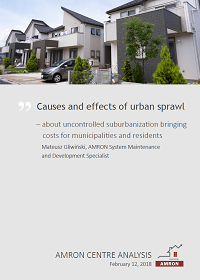
Urban sprawl reveals as uncontrolled growth of suburban settlements. The suburbs of large cities grow spontaneously and the municipalities are not able to provide adequate service for these areas. In Poland after
the transformation, trade and services have become the leading branches of the economy. As a result, agriculture land has massively been changed into development land. Nowadays areas designated for development characterize with strong fragmentation of plots. Abandoning the process of merging and dividing land and the lack of control over spatial growth caused the spontaneous creating of formation of buildings ‘anywhere’.

Trend of constructing housing facilities of the floor area not exceeding 50 square metres arose in United States
of America, but – due to low construction cost and practical possibilities of usage - micro homes have been popularized also in Japan and European countries. For some time, the trend of downsizing the floor area of newly constructed single-family houses is observable also in Poland. Micro homes may be the only choice for those,
who intend to live independently, but with no budget burdens or no long-term mortgage loan. Considering the increase in housing prices, there is a high probability that such designs of micro houses will gain popularity also
in our country.
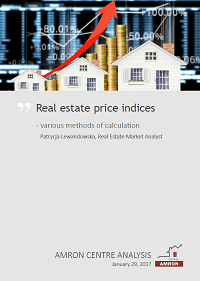
Housing price indices are the basis for analysing and forecasting the dynamics of changes in properties value.
They measure the change in the price of a single good or basket of goods in a specific period in relation to the price of the same good or basket of goods in another period. Properties are not homogeneous - they differ in terms of area, standard, location and other characteristics. Additionally, typical feature of real estate market is the irregularity of transactions that occur on it. All this makes construction of a reliable price index not an easy matter.

Siedlce is fourth most populous province of Mazovia with a population of 77 020 citizens in 2016.
Number of inhabitants has been slightly increasing, which might translate into increased housing demand.
On average, housing prices on primary market in Siedlce are higher than on secondary market by PLN 400.
As for the end of 2017, housing prices in Siedlce were the highest since the beginning of 2012.
The greatest number of transactions (48.02% of all transactions concluded in Siedlce in that period)
concerned housing units with usable floor area ranging from 50 to 75 sq.m.

In 2017 Polish housing market continued a winning streak, which has been lasting already four years. It was another record-breaking year in terms of both building and sales of dwellings. An increase in the average transaction price per 1 square meter of floor area during the last year was recorded in all analysed agglomerations. Also analysis of housing rent agreements in most of the largest urban centres in Poland showed an upward trend. In comparison to the results recorded in the period from January to November 2013, last year there were 61% more dwellings built by developers, the number of started constructions was twice as high and the number of permits issued increased by 136%.
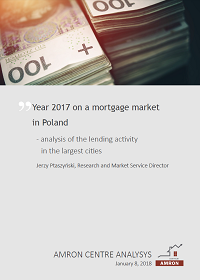
Year 2017 brought revival on the mortgage market in Poland. Data from the SARFiN System indicate that we have witnessed the best year since 2011. During the first three quarters of 2017 a 6.89% growth in terms of quantity was observed, compared to the results recorded in the corresponding period of the previous year. In terms of value, the growth was even higher and reached 13.23%. The growth in demand for mortgage loans recorded in 2017 was influenced most of all by low interest rates level, as well as by increased housing availability. At the same time, expanding loan margins have chilled the situation on the mortgage market in the first half of the year.

Lodz is the third largest city in Poland in terms of population size according to Central Statistical Office (GUS) -in 2016 it was inhabited by 696 503 residents. Many universities are located in the city, as well as headquarters and branches of international and domestic companies. The balance of migration for permanent residence recorded by Central Statistical Office since 2005 is invariably negative, however, many new investments are being made in the capital of Lodzkie Voivodship. The dynamics of residential housing prices on both primary and secondary market in Lodz are similar.

Most real estate market analysts admit recently that significant part of the demand for flats comes from private investors buying apartments for rent. Historically low level of interest rates, effectively discouraging people from keeping money on bank deposits, seems to be the main reason for this. Uncertain prospects of the pension system resulting from the unfavourable demographic situation, additionally deepened by lowering the retirement age, is also an important factor.

Along with winning streak of developers, record sales and fast pace of starting new projects, housing sector has been changing in qualitative terms at every stage of the construction process: planning, investing and project commissioning with after-sales service.
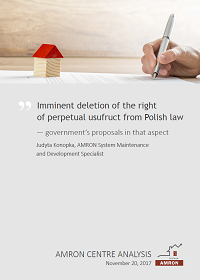
Perpetual usufruct, which was introduced into the Polish legal system in 1961, is specified by a numerous experts as a relic of previous era, as modelled on soviet solutions. Unclear situation of a building and housing units constructed on a plot used on a basis of a perpetual usufruct agreement after the end of the usufruct has been an issue of serious concerns. The court jurisdiction in this regard was inconsistent. The supreme court has adopted a position and stated the expiration of perpetual usufruct does not cause expiration of ownership of premises located in the building situated on the used ground (resolution of the Supreme Court dated August 25, 2017, Ref. No. III CZP 11/17).

The Land Act on suspension of the Treasury agricultural land sale and on amendments to certain other acts, which changed, among others, act on Agriculture System Forming, was planned to reduce the sale of Polish land to foreigners, but the number of transactions concluded actually increased compared to previous years. Strict rules of purchase and sale of agricultural land introduced in the Land Act have limited the trade in agricultural land mainly among Polish farmers. After nearly a period of 18 months when the new law has been in force, the Ministry of Agriculture and Rural Development has prepared proposals for changes aiming to clarify the binding legislation.
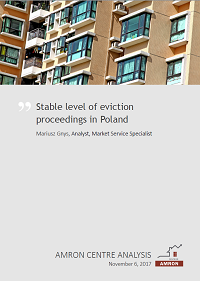
Several government programmes aiming to support Polish families, i.e. ‘500+’ or ‘Flat Plus’, along with positive economic trends, increasing salaries and diminishing unemployment, contributed to systematic improvement of the households’ financial standing. However, according to the newest data published by Central Statistical Office, many families still have significant housing problems – only in 2016, over 7 200 eviction proceedings were conducted, while in 2015 there were 8 200 of such proceedings executed.
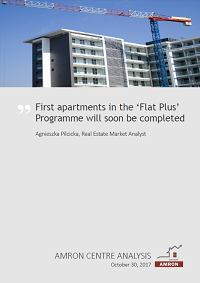
The ‘Flat Plus’ Programme is gaining momentum. More than 70 cities have expressed their intention to join the Programme, and the pool of plots for the construction of dwellings meeting the criteria of the Programme is constantly growing. According to information provided by the Ministry of Development, currently more than 10 thousand apartments in approx. 20 Polish cities are being prepared within the commercial part of the Programme, more than 1.2 thousand of which are under construction. Total value of investments by BGK Nieruchomości S.A. amounts to over PLN 2 bn.
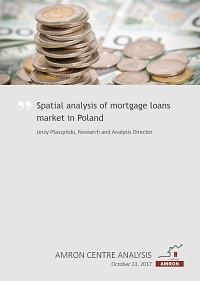
According to data collected in SARFiN System, in the last four quarters there were 184 621 mortgage loans granted in Poland for the total amount of PLN 42.152 billion. After a good first quarter, when mortgage lending was supported by government subsidies under the ‘Flat for Youth’ Programme, the second quarter of this year repeated the result of the first one. This allows to forecast the optimistic yearly outcomes at the level of approx. 200 000 new mortgage loans amounting to PLN 50 billion.
Spatial analysis of Polish mortgage market could be an interesting supplement to the data provided in quarterly AMRON-SARFiN Reports.

On October 6, the public consultations on a new law simplifying the investment process were closed. New law aims to eliminate "bottlenecks" of the investment and construction process. Act on amending certain acts in relation to simplification of the investment and construction process (which is the full name of the new regulation) introduces numerous changes to the Building Law, Geodesy and Cartography Law, or the Planning Act, which are the initial introduction of planning system modification included in Urban Building Code (KUB). Government wants to encourage private and public entities to start new projects and therefore to increase the number of investment.
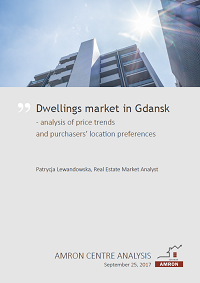
Gdansk, the capital of the Pomeranian Voivodship located over the Gdansk Bay, is the sixth largest city in Poland in terms of population size according to the Central Statistical Office (GUS) - in 2016 it was inhabited by 463 754 persons. The city is an important university centre in the country, moreover, the migration balance has been positive for the last few years, which certainly creates suitable conditions for the development of the housing market.

Under the ongoing space management reform, concurrently to presently proceeded Urban Development and Construction Code, two new draft acts were presented: act on investment construction administration and general building authority and act on architects, construction engineers and urban planners.Purpose of the new regulations is to reorganise space management processes and construction investmens.
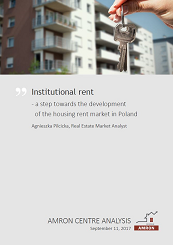
The Act on National Land Resources enters into force on September 11, 2017. In addition to regulations related to the ‘Flat Plus’ Programme implementation, the Act introduces significant changes to tenancy rules of housing properties. The most important change limits the group of landlords renting flats based on the occasional lease agreement only to those not running business activity in the area of housing rent and introduces a new, third type of housing rent, so-called institutional rent.

Those taxpayers, who obtain significant incomes from private rent of dwellings, may feel anxious about changes announced recently by Ministry of Finance. Draft act of July 6, 2017 on changes in several tax acts sets an income limit from renting the immovable property entitling to a flat tax rate. The amendment assumes an yearly limit of the personal income at the level of PLN 100 000 for taxpayers, who do not pursue business activity.
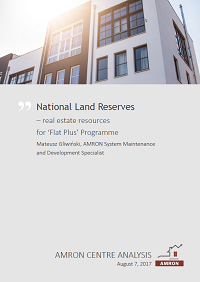
On July 27, during the emotional debates on the Supreme Court, the Senate adopted the act on National Land Resources. The new law establishes a new state legal unit - National Land Reserves (KZN), designed to manage the property of the State Treasury, to create favourable conditions for social housing development and financing, as well as to conduct all necessary preparations of plots of land for investments in terms of technical requirements. Moreover, KZN will be a research centre providing analytical work in the fields of housing, real estate, construction, spatial planning, revitalization and popularizing innovative solutions in cooperation with research institutions and universities.
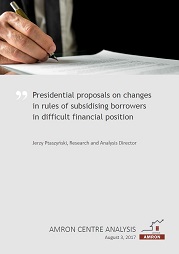
On August 2, 2017 president Andrzej Duda submitted to the marshal of the parliament a draft bill to change the mechanism for subsidizing the mortgage borrowers in difficult financial position, as well as to launch a new instrument supporting voluntary restructurings of currency mortgage loans. New act determines conditions for granting the repayable assistance to natural persons - parties to the loan agreements obliged to repay mortgage loans, who found themselves in situations of financial difficulties, rules of granting credits for repayment of part of the loan remaining after the property sale and sets principles for voluntary currency restructuring.

Plock situated by the Wisla river is the third city in Masovian Voivodeship in terms of population size (following only Warsaw and Radom) – according to data gathered by Central Statistical Office of Poland number of Plock habitants in 2016 equalled to 121,295. (...) In years 2012 – 2017 average prices of dwellings per one square meter in Plock were quite stable both on the primary and secondary markets (Chart 2). Average price on the primary market has been fluctuating around PLN 4,000 per square meter, peaking in the third quarter of 2016. (...) Average price on the secondary market over the last few years was close to PLN 3,500 per square meter.

The Polish sustainable construction market thrives. Each year the number of modern certified buildings is rapidly increasing. Customers are more aware of the benefits of staying in energy-efficient, user-friendly and eco-friendly buildings, the number of professionals who are able to design and build such buildings grows as well. We witness transformation of thinking about construction industry as a consequence of global environmental changes, as well as changes in people’s lifestyles and expectations. Although building certification is still the domain of the office sector, a 25 percent increase of certified residential buildings in whole building certification market1 is optimistic and indicates the direction of future changes.

3D printing is becoming more and more popular - advertising gadgets, toys, furniture, and even dental implants that are emerging in this technology are no surprise any more. Whereas in Poland, few people have heard of houses or even entire housing estates printing. Probably, the possibility of printing objects of such dimensions is surprising.
3D printing technology is slowly entering the construction industry. More and more often it is used for the production of individual structural elements, which would be difficult to manufacture in the traditional way.

Since 1989, Poland has gone through a political and economic transformation, which turned out that a dwelling was beyond the reach of the average household. The situation was exacerbated by the housing deficit. In that case, Polish government of the time decided to develop social housing and the system supporting the supply of apartments for rent with mod-erate rents was initiated as the first attempt to implement a housing policy supporting the initiative.

Poznan is the fifth largest residential market in Poland. In the period from January 1, 2005 to March 31, 2017, almost 40 thousand housing units were completed in this city. More dwellings were completed only in Warsaw, Cracow, Wroclaw and Gdansk. Despite such a developed market, in terms of the availability of housing, Poznan was located on third place among the cities with the lowest purchasing power, worse situation was only in Warsaw and Cracow.
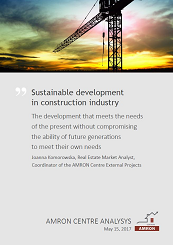
Progressive economic development, increase of social needs, together with intensive environment transforma-tions generate risks, the scale and complexity of which can only be solved through integrated action of many actors. In the spirit of responsibility for the living conditions of present and future generations, the international community, represented, among others, by the United Nations, has been calling for years for involvement in sustainable development idea. This concept means development that meets the needs of the present witho-ut compromising the ability of future generations to meet their own needs.

Purchase of flat or detached house is one of the most important decisions in life and that’s why it is worth ensuring that all documents concerned with the transaction are clear and understandable. One of such a document is a developer agreement - kind of preliminary agreement concluded by developer and purchaser. Developer agreement is always concluded in form of notarial deed. Its contents and form is specified in the act of September 16, 2011 on protection of rights of purchasers of a housing unit or a single-family house. What should be included in the contract?
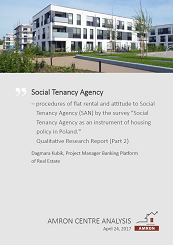
General rules and goals of Social Tenancy Agency were presented to the survey’s participants. Their comments and previous experiences with real estate agencies’ services could be helpful to describe the most desirable scope of agency’s services, which could act as Social Tenancy Agency. In owners and tenants opinion the services of such agency should be very comprehensive and cover all kind of activities connected with the process of renting on each step of the process.
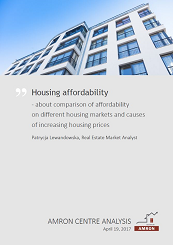
Problem of rising housing prices in the world is becoming more and more serious. Effects of decreasing housing affordability are, among others, worsening standard of living (households are forced to buy smaller apartments/houses) and economic uncertainty, because spending on housing is an important part of overall household spending. In addition, smaller fraction of families can afford ownership of a housing property and houses start to be overcrowded.

Work on new legislation, which comprehensively regulates the rules of mortgage lending in Poland, is coming to an end. On March 24, 2017, the act on mortgage loans and the supervision of mortgage brokers and agents was passed on to the President for signature. There have been no regulations dedicated to mortgage loans in Poland so far, but the provisions of the new act to greater extent sanction the rules that already exist on the Polish market of real estate financing. Now they are included in Polish Financial Supervision Authority recommendations or simply in banking practice. What are the solutions of the new act?
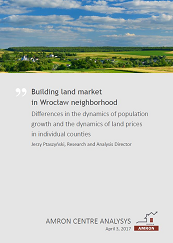
Similarly to other major urban agglomerations, a constant increase in number of inhabitants of Wroclaw agglomeration’ counties has been observed for last several years. According to data published by Central Statistical Office, since 2005 population of the three counties bordering Wroclaw - średzki, trzebnicki and wrocławski, has increased by more than 20%. (...) Such dynamic demographic changes must have caused consequences for the real estate market, especially in the segment of building land for single family housing. Moreover, strong relation can be seen also between differences in the dynamics of population growth and the dynamics of land prices in particular counties.
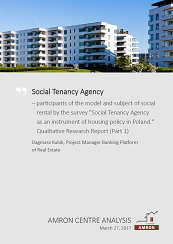
Social Tenancy Agency offers tenants and owners intermediation services as well as additional professional services, i.e. especially the supervision of rented dwelling, including verification of its proper usage and timely payments. This model is not focused on housing investments but on rental intermediation and related services.

In January this year, two years have passed since the introduction of the BGK commercial project - Fund of Flats for Rent. The main principle of the project was to activate the housing rent market by extended availability of dwellings for rent, popularisation of institutional rent and increasing Poles’ mobility. The project is addressed to citizens, who cannot or do not want to take out a longterm mortgage loan, as well as to those, who have experienced the housing rent on commercial terms and found it unsatisfactory, to students or to migrant workers.

Warsaw is the largest residential market in Poland, very well developed both on primary and secondary market. In terms of the availability of housing, Warsaw was located on 2nd place among the cities with the lowest purchasing power, worse situation was only in Cracow. Increasing, resulting from high sales, developers’ activity in Warsaw provide adequate supply, which was flexible adjustment to market. As a result, a relative balance between the available offer and the interest of buyers was observed, which meant that average housing prices were rather stable.

Senior citizens belong to this group of customers, whose needs have to be taken into account. Currently we can speak of separate system of so-called ‘silver economy’, which means the system of production of goods and services for the elderly. This system includes construction industry, offering housing, day-care facilities and specialized units providing care and medical services for seniors. The demographic revolution, often called the ‘silver tsunami’, is a process that has already begun.
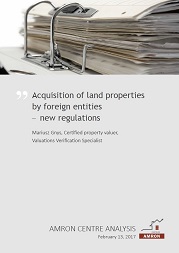
Further changes to rules of real estate acquisition by foreigners were recently implemented. Few days ago, the President of the Republic of Poland signed the amendment to the act dated March 24, 1920 on real estate acquisition by foreigners, which - together with the new act on agriculture system forming - significantly affects rules of land purchase by foreign entities.
New law supplement the list of authorities obliged to provide MSWiA with the documents related to real estate purchase by foreigners and extends the list of such documents.
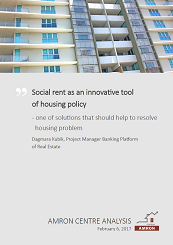
In Poland, a shortage of housing amounts to approx. 2 million of housing units. According to data Central Statistical Office gathered during the National Population and Housing Census conducted for the reporting year 2011, the index of number of housing units per thousand citizens equals to 357, which is one of the lowest among European countries. Housing problem is one of the most serious problems of Polish society, especially acute and urgent in case of persons with low income, who are facing the threat of social exclusion or homelessness. One of solutions that should help to resolve this problem in the future is social rent, implemented as the element of the state’s policy in scope of housing.

A new act aiming to improve the legal environment of the entrepreneurs (Official Journal of 2016 item 2255) have been binding from January 1, 2017. The new law is the following amendment to the act of July 7, 1994 - a building code. Implemented amendments have continued changes started in 2015, aiming to simplify procedures concerned with starting a construction process. New laws augment the catalogue of construction works dispensed with the procedure of the construction notification or obtaining the construction permit.
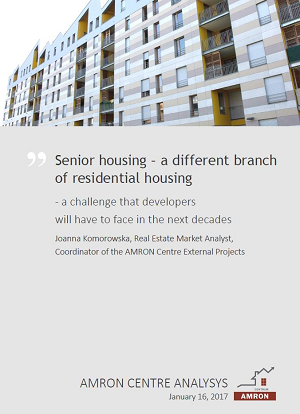
One of challenges that developers will have to face in the next decades will be providing a new standard of housing, adapted to the elderly needs . Increase in life expectancy and low level of birth rate in Poland result in increased share of older people in the population. Nowadays Polish society is the fastest ageing through all European Union countries and statistics indicate that in next 10 years there will be more pensioners than 25-year-olds, while in next 30 years people aged 65+ are to constitute 1/3 of the population of the country.

The year 2016 seemingly did not bring major changes on housing market in Poland. Sale of apartments, especially on primary market, remained at high level and in most the largest Polish cities prices remained stable or showed a slight upward trend. As in previous years, low interest rates on one hand encouraged people with savings collected on bank deposits to purchase properties for rent yielding much higher return on investment, while on the other hand encouraged to borrow on favourable terms.

Polish housing loans market has not begun to develop from day to day, along with the political and economic trans-formation started in 1989. High interest rates, which discouraged potential borrowers to get engaged into long-term commitments were the basic barrier for development of this market in initial, fairly long period. It took several years to appear suitable market conditions for development of banks’ lending activity. The measure of market growth is the fact that Polish banking sector granted more than 2.6 million housing loans for a total amount of approx. PLN 500 billion in the period from 2005 to 2016. Nevertheless, Polish housing loans market is still relatively young, with large disparities, comparing to other European Union countries.

On October 10 this year, a draft amendments to Recommendation S on good practices related to mortgage-secured credit exposures was addressed to the public consultation by Polish Financial Supervision Authority. The purpose of changes is to convince banks to offer housing loans with fixed interest rate. Ministry of Finance also works on new regulations, which will persuade banks to offer such loans. The Act on mortgage loans is in the consultations and is expected to be adopted in near future, most of all due to pressure from European Commission. Meanwhile, mainly as a result of historical conditions, Polish housing loans market is dominated by loans with variable interest rates based on WIBOR 3M. Record-breaking low interest rates and the prospect of their growth make that fixed interest rate loan seems to be a very attractive solution for potential borrowers, because the initial instalment level would remain unchanged for a certain period.

Ministry of Infrastructure and Construction elaborated the draft amendment to the act on protection of tenants’ rights and several other acts, including Civil code. The projected regulation is to introduce several changes concerning housing stock under the control of the municipalities, as well as - inhabitants of those dwellings. As it is stated in the justification of the new law, the main purpose of the amendment is to improve the efficiency of the social housing management, to solve the problem of social housing shortage and to assure the optimum support for the most deprived persons. The draft law is currently under public consultation, which shall last until November 22 this year.
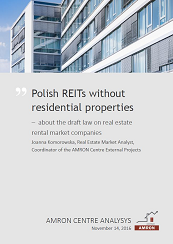
Despite the Deputy Prime Minister’s announcement stated in the Capital Building Programme that the Public Real Estate Funds (Polish REITs) would invest in residential and commercial fixed income, as well as despite provisions of the National Housing Programme, the draft law on real estate rental market companies, submitted for public consultations, excluded residential buildings and dwellings. Thus, the Polish REIT compa-nies will focus on the commercial real estate market.
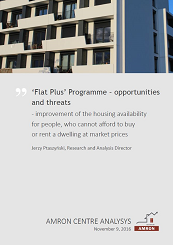
According On September 27, 2016 the Cabinet passed a resolution on adopting the ‘National Housing Programme’, the document specifying objectives of the housing policy until the year 2030. One of three key goals of the Programme is "Improvement of the housing availability for people, who cannot afford to buy or rent a dwelling at market prices." According to the Programme’s authors, the aforementioned effect is to be achieved by implementing the package of initiatives under the ‘Flat Plus’ Programme designed to increase number of dwellings offered for moderate prices and rents by direct investment activity of established especially for this purpose the new state entity - National Housing Operator.

Transformation of Wola district has been observed for several years, which, thanks to the influx of new residents and companies, transforms from an industrial neglected district into the business and residence area. In the past, Wola district was dominated by huge industrial areas and post-industrial, grey housing buildings from the 50s and 60s, today it is one of the most interesting investment areas of the capital city. On sites of the old factories and warehouses, the new residential developments are built and in the area of Rondo Daszyńskiego the new Warsaw business centre has been formed with numerous modern office buildings.

Since April 2012, developers are required to prepare a prospectus concerning every residential project. Such a document is aimed to protect purchasers of flats and detached houses constructed by developers. Careful reading of the prospectus provides comprehensive information concerning the project before signing the developer agreement (i.e. kind of preliminary agreement concluded by developer and purchaser). What is important, both prospectus and the developer agreement should be consistent with each other and any differences, if they arise, must be clearly described in the agreement.
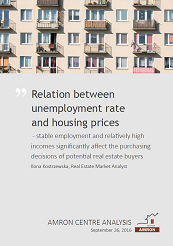
There are many reasons for the differentiation of housing prices in Poland. A number of factors affecting increase in real estate prices can be listed, it is not also difficult to find the causes of the decline trend in local real estate markets. Identification of demand and supply determinants of the housing market development allows to distinguish four main groups of factors: political, legal and organizational, social and economic. (...) The unemployment rate, which is the relation of unemployed people to the number of economically active pop-ulation, has undoubtedly a great influence on the potential housing purchasers’ behaviour and decisions.

Katowice agglomeration is the largest Polish metropolitan centre. The agglomeration includes 19 neighbouring cities of the Silesian voivodship, with population of over 2 million people. The capital of the region is Katowice with more than 302 thousand inhabitants and local centres are Gliwice and Sosnowiec. The agglomeration has the highest density of railway and road network. The communication system is complemented by the Katowice Airport in Pyrzowice.
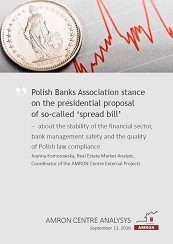
The bill on principles of reimbursement of certain receivables resulting from credit and loan agreements, commonly called the ‘spread bill’, submitted to the Parliament on August 2 this year by the President of the Republic of Poland was regarded negatively by the banking sector. In an official document, sent on September 13 this year to the Chancellery of the Sejm, the Polish Banks Association expressed the sector’s concerns about the stability of the financial sector, bank management safety and the quality of Polish law compliance.

According to data published by Central Statistical Office, Poznan is a standout among the biggest Polish cities in terms of percentage of inhabitants choosing to move outside the city. CSO data show that for last 10 years almost 1% of the population has been moving out from Poznan to the city’s outskirts every year. This seems to be confirmed also by changes in number of inhabitants of city of Poznan and the Poznan county. In the analysed period, a clear, steady decline in the Poznan population size was noted and at the same time a steady, dynamic increase in number of Poznan county inhabitants was recorded.

The so-called ‘small restitution act’ and officially – the amendment to the Act of 21 August 1997 on real property management, was adopted in purpose to solve the problem of Warsaw’s properties taken over by the state on the legal basis of the so-called ‘Bierut Decree’. The remaining part of the country, along with many major cities, remains in the present legal state and thus with existing problems.
Find out facts after the amendment to the act on real property management.

High demand on small dwellings is one of the Polish housing market specific feature – bedsit apartments are popular not only among young people, who purchase them as their first housing, but also among investors, assuch dwellings are perfect for renting.
Ministry of Infrastructure and Construction has initiated changes in currently binding floor area limits regarding housing units. Such changes will allow to build higher number of flats far more tailored to the purchasers’ needs.

Housing is one of the most important areas of economic and social policy of the state. Its current condition results from political changes that have occurred in the previous century, which later led to low efficiency in dealing with large population growth and internal migrations.
Despite the fact that housing policy is one of the state’s obligations, reflected in Polish Constitution, there is no coherent housing policy, responding to the problem of housing availability and relation of citizens’ salaries to real estate prices. After 1989, successive governments introduced some assistance programmes. In the article you'll find the assumptions and the results of each of them.

Short-term rental market of flats and apartments is now quite widespread phenomenon in Poland. There is a huge selection of locations and types of properties. Both luxury apartments in prestigious locations and ordinary flats are available for tourists in many cities. Such rental has become a way to make money for growing group of companies and individuals.
Find out a story about business experiences of short-term rental pioneers in Warsaw.

Demand for building land in a vicinity of the major cities is fuelled mostly by migrations, both from outside of the agglomeration as well as people intending to move out from the city and live in a detached house in a close neighborhood of it. Investment movement, manifested by considerable number of newly started constructions of detached houses may signify that the process of moving from the cities to suburban areas slowed down only for a time of economic slowdown and economic growth noted in 2015 encouraged many investors to put their earlier plans into operation again.
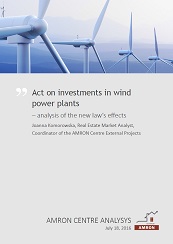
The Act of 20 May 2016 on investments in wind power plants, significant not only for the renewable energy industry, but also for housing developers, came into force in mid-July this year. The Act, widely commented in the past few months, sets out the conditions of construction and location of wind turbines in the vicinity of existing or planned resi-dential housing.
Find out the analysis of the new law's effects.
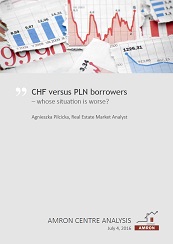
62% of CHF borrowers declare their willingness to benefit from the public aid solutions, which so far are mainly different variants of currency conversion into PLN. Are the CHF borro-wers, in accordance with generally prevailing view, are actually in worse situation than those, who have taken out loans in domestic currency?
Whose situation is worse?

As for the end of 2015, there were 1,9 billion of active mortgage loans in Polish banks’ portfolios. Data of Polish Banks Association published in AMRON-SARFiN Report prove that the volume of new housing loans agreements increased by 4.16% comparing to December 31, 2014 and it amounted to 181 325.
‘Report on the condition of banks in 2015’ recently published by Polish Financial Supervision Authority presents detailed data on persons taking out mortgage loans in 2015. Who are Polish mortgage borrowers? What are their professional qualifications? How much do they earn? Are they single or married?

Ministry of Infrastructure and Construction has initiated works on draft amendment to the law on land perpetual usufruct. New provisions are planned to be applicable only to plots, on which multi-family buildings are located. Starting from January 1, 2017 all shares in land perpetual usufruct will transform by law into ownership right.
Proposed changes will concern only plots with multi-family buildings, excluding commercial premises.
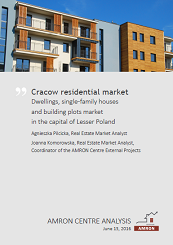
Cracow is the second in population among all Polish cities and the main urban centre of Lesser Poland region. It is also one of the top six fastest-growing housing markets and the second largest academic centre in the country. Wide housing offer tailored to the preferences of buyers, relatively stable prices and price diversity in various districts of the city reflect the maturity of the Cracow real estate market.
The most popular apartments are those of two and three bedrooms with a floor area of approx. 40-80 sq.m. – in Q1 2016 they amounted to 68% of total turnover. The demand for small dwellings with a floor area of less than 40 sq.m. was also noticeable.
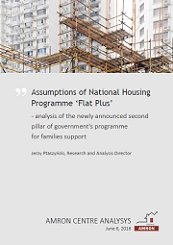
National Housing Programme ‘Flat Plus’ announced last Friday is a new government initiative planned to become one of key elements of complex programme dedicated to support Polish families. The programme’s assumptions are based on three core foundations: a National Housing Fund aimed to construct rent-regulated housing, council housing support as well as changing the principles of housing cooperatives and last but not least - encouraging individual savings for housing purposes.
Execution of such a plan, besides obvious and undoubted profits for the economy or demography, involves however certain risks that should be considered from the outset.

Demographic factor is one of those, which influence housing market the most, particularly in long-term perspective. Forecasted substantial structural changes in Polish population will have a profound impact, among others, on domestic housing market. Changes in age structure will be remarkable, as well as diminished number of women at reproductive age. Presently, the adult generation of secondary post-war baby-boomers is not eager to quick enlarging the family, due to changes in family model, traditions and cultural norms.
How the population changes will possibly affect the housing market?

After joining the EU, Poland has become a competitive market for housing investments. Over the last few months, however, investors are facing the ongoing deterioration of business conditions. Current situation has been caused by many factors, including macroeconomic, banking and legal. Polish demographic trends are also ambiguous.
Although building apartments for sale is the most mature segment of Polish housing market and the last year has brought developers to record sales results, such situation will not remain unnoticed among foreign investors – both those already engaged in business activities in Poland and those, who consider such possibility.

Poznan combines the function of not only the seat of local authorities, but is also a local centre of business, trade, industry and culture. It is also an innovative academic centre. Approximately 130 thousand students are studying at universities in Poznan. That is one of reasons why small apartments are the most popular in Poznan, mostly studios and two-bedroom dwellings.
Find out the analysis of dwellings, single-family houses and building plots market in the capital of Greater Poland.
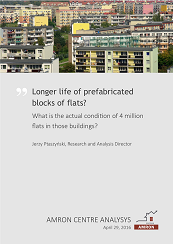
At the end of February, Polish Ministry of Infrastructure and Construction announced the audit of the current condition of prefabricated blocks of flats. It is estimated that there are nearly 4 million of flats in such buildings are occupied in Poland. Some alarmist opinions suggested that due to poor technical condition large number of those flats would have to be replaced or modernized in relatively short time.
What is the actual condition of those buildings? Is it really so dramatic as it was recently claimed?

On March 15, BGK suspended the acceptance process of applications for loans subsidised under the ‘Flat for Youth’ Programme. After the last year’s amendment to the act that extended the range of the Programme on secondary market and increased the subsidy amount for multi-children families, number of submitted applications grew dramatically. Already in March the sum of funds reserved for disbursements in 2016 accounted for 95% of the total sum of funds budgeted for the whole year 2016.
Facing the exhausting funds, the issue of continuous publishing new ratios for calculating the maximum price binding for subsequent six months raises doubts about its soundness. Who will lose the most on this?

Politicians, representatives of the banking sector, developers, housing associations and representatives of organizations dealing with social issues agree that there is a need to establish a new kind of banking institution in Poland – building societies.
The new programme will be dedicated primarily to families of middle and low income - the state help should enable them to meet their housing needs without risky borrowing.

Wroclaw is one of the leading Polish cities in terms of developers’ offer. The fluctuations of real estate prices are only minor and the district diversity shows the maturity of the market. The preferences of buyers are quite stable and the offer on the primary market is well matched.
Find out the analysis of dwellings, single-family houses and building plots market in the capital of Lower Silesia.

The draft act on changes to the act on Bank Guarantee Fund was passed to the Parliament. The purpose of the amendment is to protect the purchasers on primary market from the bankruptcy of banks keeping the developers' escrow accounts. One of the major changes that amendment to the ‘developer’s act’ would introduce is elimination of open escrow account, unsecured by any bank or insurance guarantee.
If the proposed changes come into force, who will feel the effect more: homebuyers or developers?

Last year’s amendment to the act on Act on state aid in young people first housing purchase adopted in September last year enabled to subsidy the housing purchase on secondary market. Due to that change, popularity of the Programme significantly increased.
Volume of applications for preferential loans hit its records month by month: in September 2015 it amounted to 3 744, which was over twice more than in last month of the Programme’ operating on the previous rules.
What is the future of the Programme?

Increased level of minimal downpayment required by the Polish Financial Supervision Authority (KNF) from potential borrower will lead to saving demands. Higher initial capital means more secure loan, lower credit instalments and shorter repayment period. Systematic saving will bring benefits also to those, who do not even dream of own flat nowadays.
According to data published by Kronenberg Foundation, 67% of Poles understand the need to save in order to secure their future, 63% of us talk about household budget, saving and investing, 60% would be able to save certain amount of money. But do Poles actually save?

According to data presented by Agricultural Property Agency, land prices in Poland have been rising constantly for 10 years in a row. The prices increase was not disturbed even by the financial crisis that trembled other segments of real estate market.
Expectations on continuous prices increase were cut out on August 5, 2015 by adopting the new act on agriculture system forming. However, the new government found the protection level provided by the new regulation still insufficient and therefore started to work on further limitations. The projected law will introduce revolutionary changes on Polish agricultural land market.

On January 15, 2016 Polish Parliament adopted the act on certain financial institutions tax. In concequence, from February 1 all domestic banks, foreign banks branches, credit unions, insurance and reinsurance undertakings and credit companies will be subject to so-called 'bank-tax' accounting for 0.44% of the assets amount.
As a result, costs of banking services will significantly grow - in purpose to prevent potential losses, banks and other financial institutions have already started to increase fees and commissions.

According to the researches of ‘Banking Monitor’ published in December 2015 by TNS Polska SA, the end of last year was the time of mortgage market revival. Projected margins increases, growth of the minimal downpayment, as well as a record-breaking number of applications for subsidy in ’Flat for Youth’ Programme led to increase in mortgage loans demand. Low interest rates, rise in average wages and stabilization of housing prices were also factors that supported the increased number of housing transactions, both for private and investment purposes.
Meanwhile, consumer sentiment as well as banking sector forecasts are not quite optimistic.
What can we expect in 2016?

Last year we have witnessed several important changes on housing market, however prices in most of Polish cities remained stable. Despite the slight fluctuations of the average prices on the biggest markets, demand and supply were actually in balance. Series of interest rates decreases resulted in reductions in mortgage loans interest rates and therefore increased the Poles’ creditworthiness. Nevertheless, volume of newly granted loans diminished constantly until Q2 2015, when downward trend was stopped. Mortgage lending results recorded as for the end of Q3 allow to predict that the result of the whole year may be slightly better than the results of 2014.
What affected the Polish housing market in 2015 the most significantly?

According to the new Hypostat 2015 report published by the European Mortgage Federation, Poland is among those EU countries, in which the owner occupation rate is one of the highest. As many as 82.4% of the total housing stock are condominiums. This puts Poland at a comparable level with the Czech Republic, Latvia, Malta and Estonia. A larger share of condominiums has only Bulgaria, Croatia, Slovakia, Hungary, Lithuania and Romania. The share of condominiums in most of the “old” European Union countries looks differently - in Germany it amounts to 53.3%, in Austria 57.5%, in France 63.7%, which represents respectively less than 65%, 70% and approx. 77% of Polish indicator.

WARSAW RESIDENTIAL MARKET IN Q3 2015
December 7, 2015
The average transaction price per 1 sq.m. of floor area in Warsaw has been slightly growing for last three quarters. Price fluctuations in particular districts of Warsaw, both on primary and secondary markets, did not exceed 4% (in comparison to Q2 2015).
Analysis of the structure of turnover volume in Warsaw allows to extract two groups of districts - districts located in the north and west of Warsaw with lower average size of sold dwellings and the group of districts in the south and east of Warsaw with higher average floor area of newly sold housing units. Noted differences are quite substantial and reach the level of 10-12%.

Last year was very successful for developers – it resulted in very high number of investments brought into the market, as well as in spectacular sales results. The increasing developers’ activity was noticed already in 2013, when favourable market conditions started to generate demand on a stable high level.
Developers achieved very good results both in terms of number of construction permits issued, constructions started and housing units completed - according to data published by Central Statistical Office, in Q3 2015 in all those categories there was approx. 20% increase compared to the same period last year. How long will that that propitious moment last and can any symptoms of changes be already seen?

The most controversial issue related to the ‘Flat for Youth’ Programme was the fact that it excluded secondary market and therefore favoured the developers. Amendments to the Act on state aid in young people first housing purchase, which came into force on September 1, 2015, extended the possible subsidy to housing purchased also on secondary market. Main argument for that change was a need to stimulate the turnover on smaller, local markets.
What was the influence of the latest amendments on the turnover in big cities like Warsaw? Are the binding limits adjusted to the current prices level in Capital city?

Despite the percentage of people living in leased apartments in Poland is still very low (below 10%), the sector of private residential lease grows constantly. According to Eurostat data as for 2014, 1.6 million of Poles (i.e. 4.3% of the whole population) lease apartments on commercial basis. Comparing this data with statistics for the year 2009 (2.2% of population) proves rapid progress in that field.
Solid foundations for further development of that market sector have been built and it seems that nothing should prevent from constant increase in popularity of residential lease as the alternative to housing ownership.

Starting from January 2016, the new, significantly increased limit of LtV ratio comes into force. It means that banks’ clients interested in taking a mortgage loan will be obliged to contribute 15% of property value. Ultimately, from the beginning of 2017, limitation of the LtV ratio will be set on the level of 80%.
Most of market players, in particular developers, consider the downpayment’s increase as the major factor that may possibly have negative impact on demand on mortgage loans and – in consequence – on housing. Is it really something to worry about?

